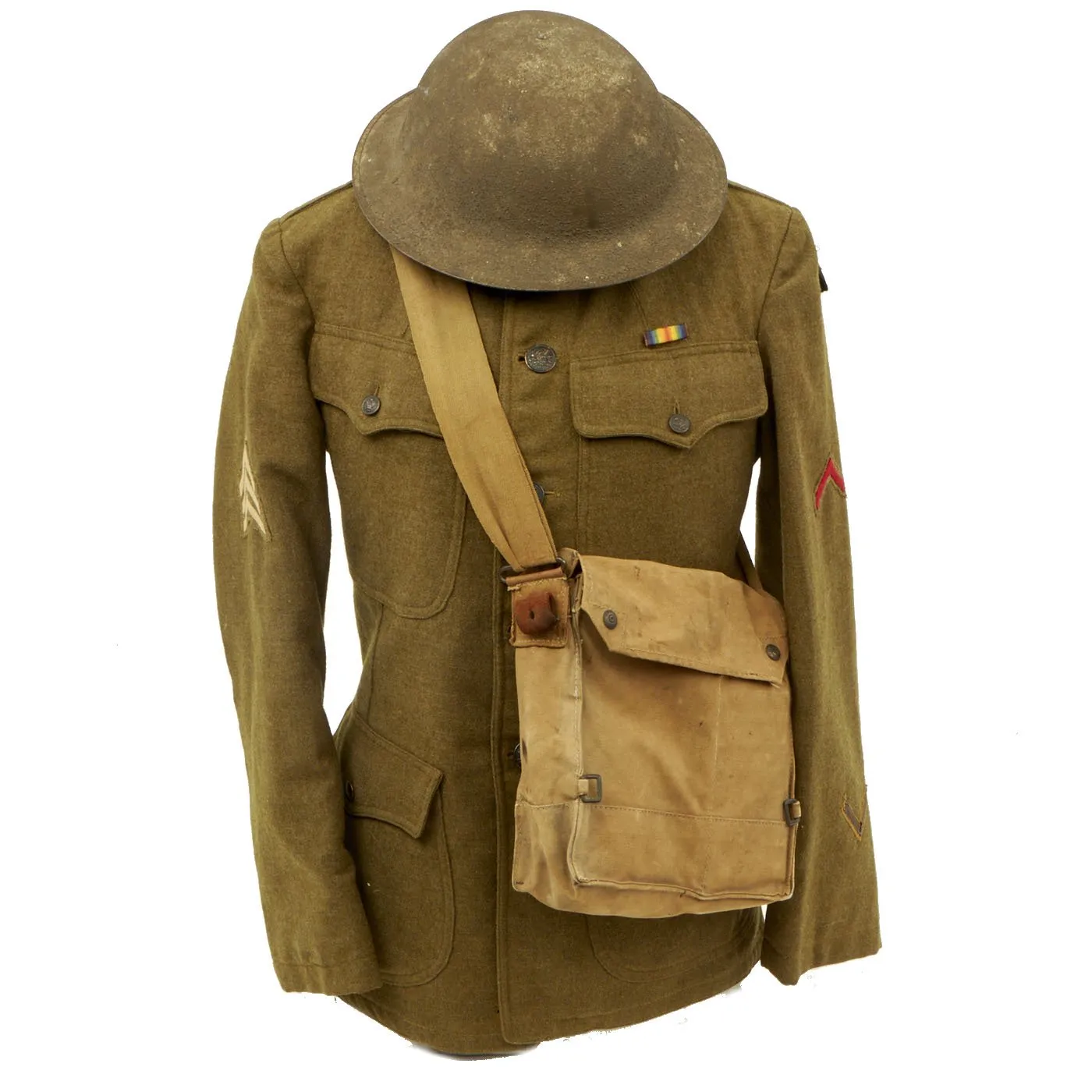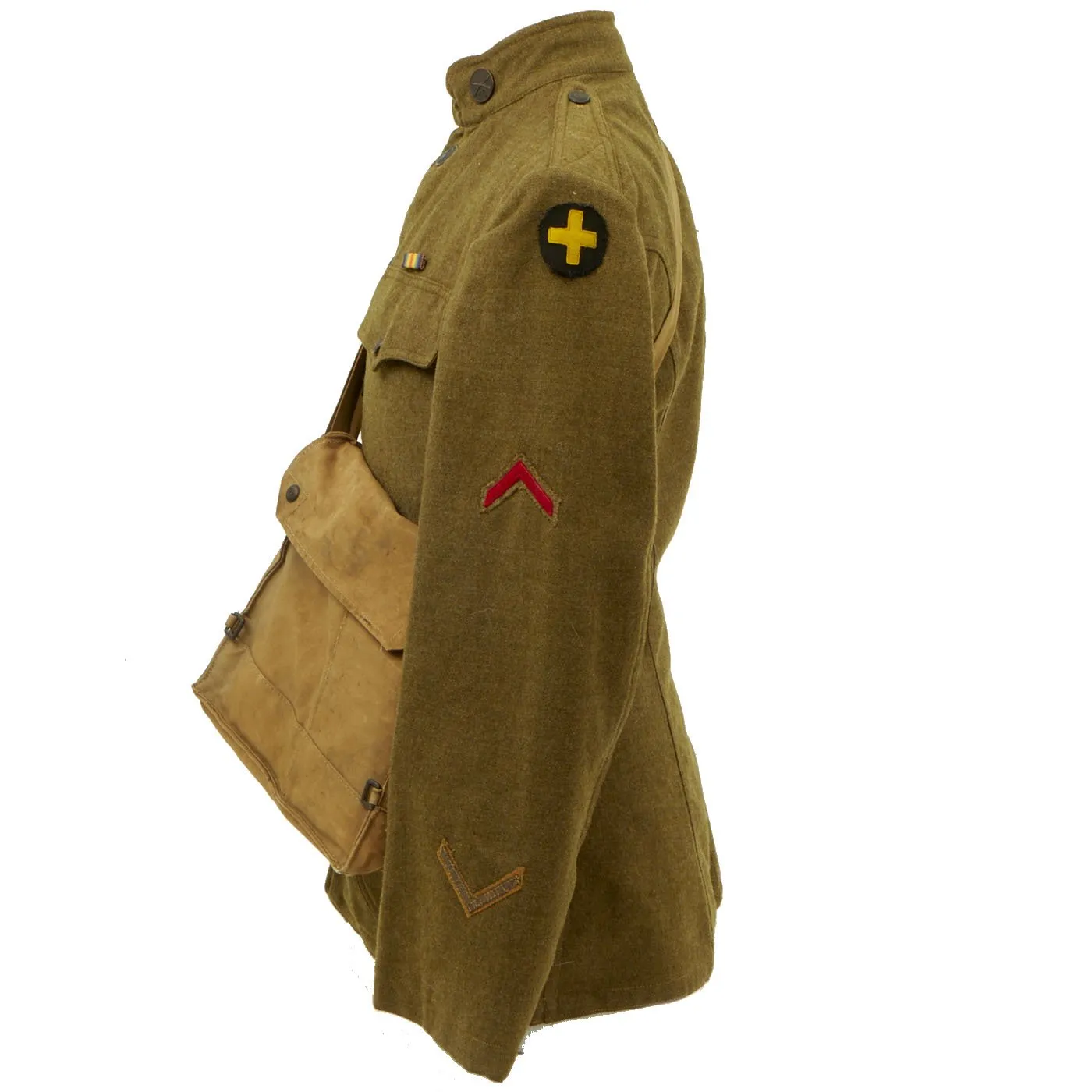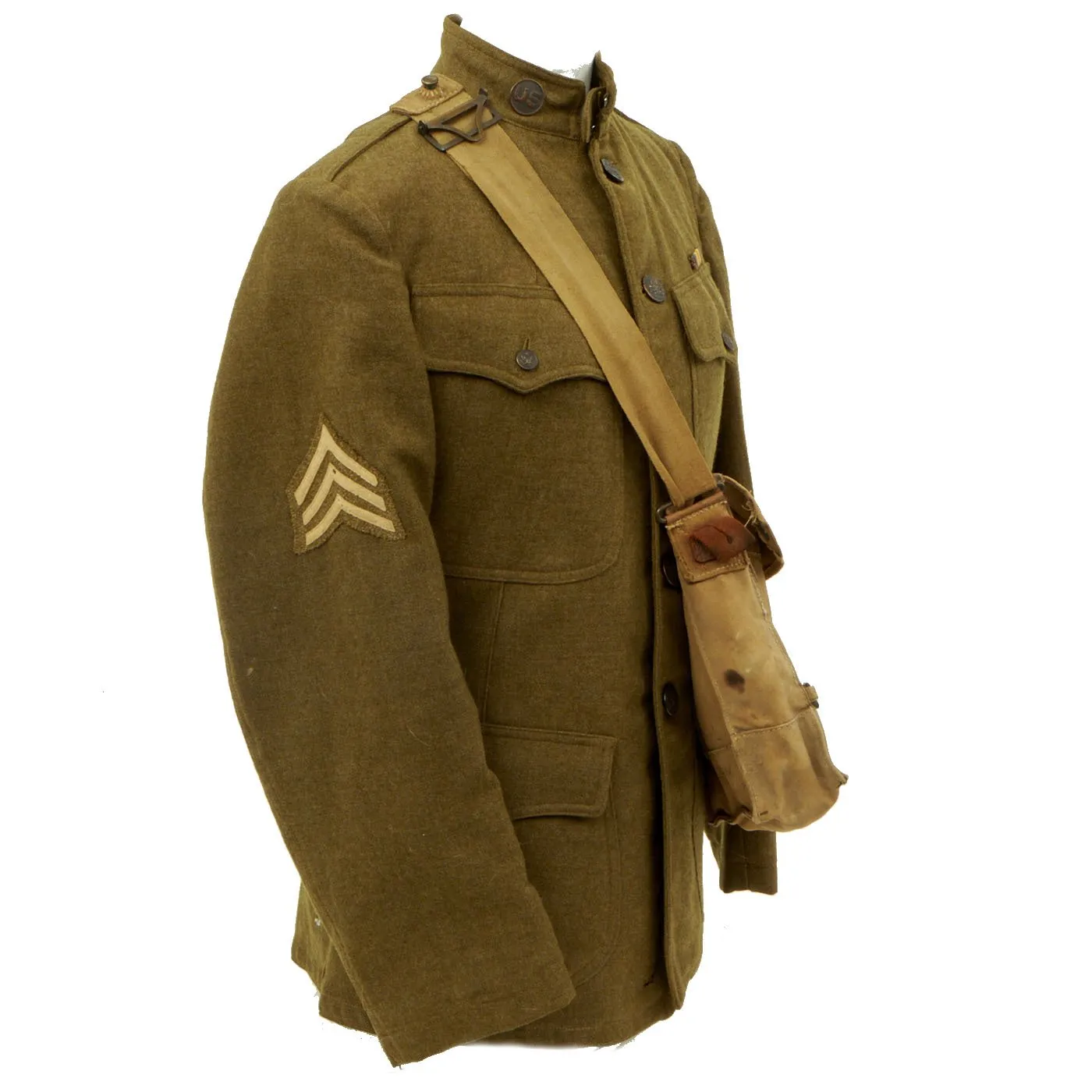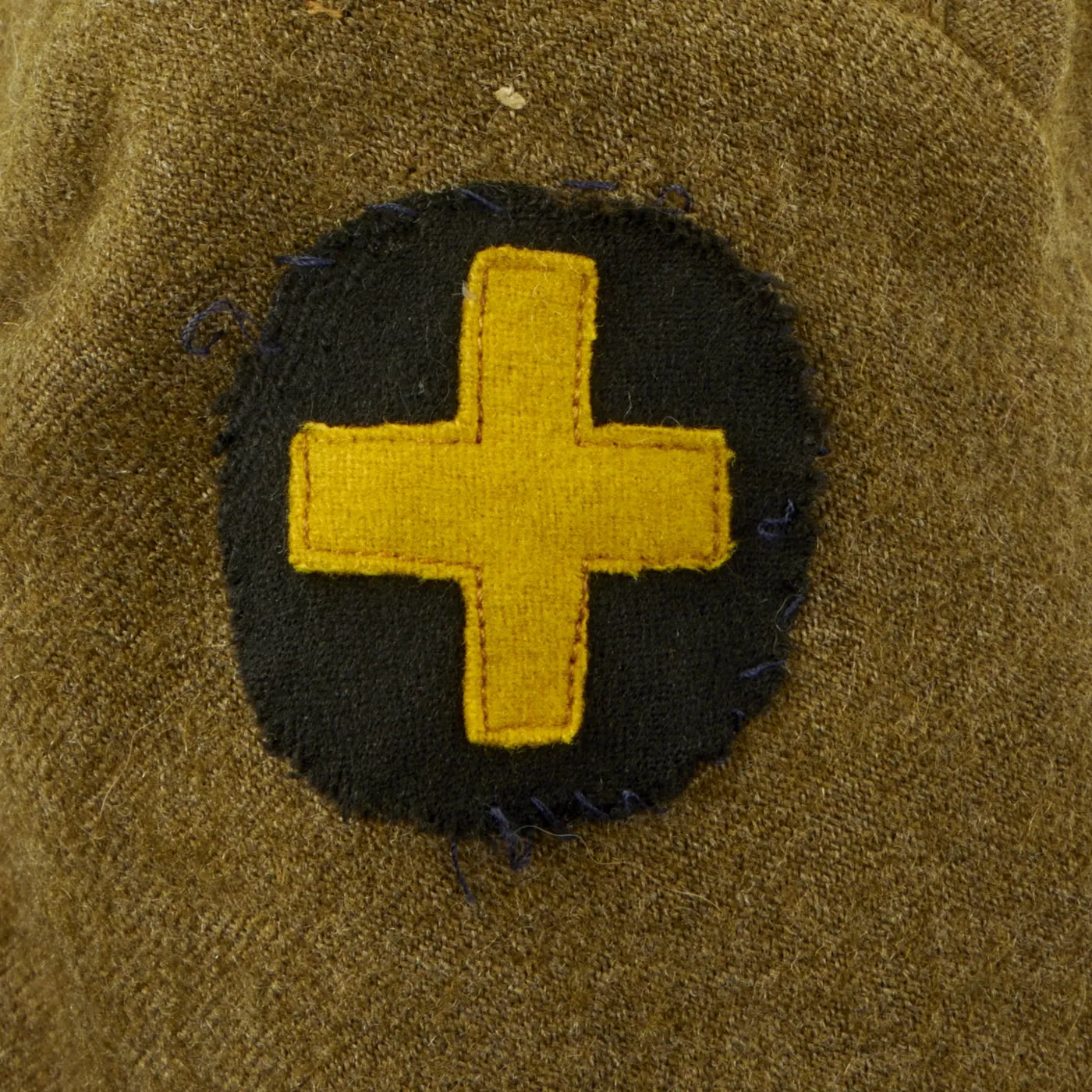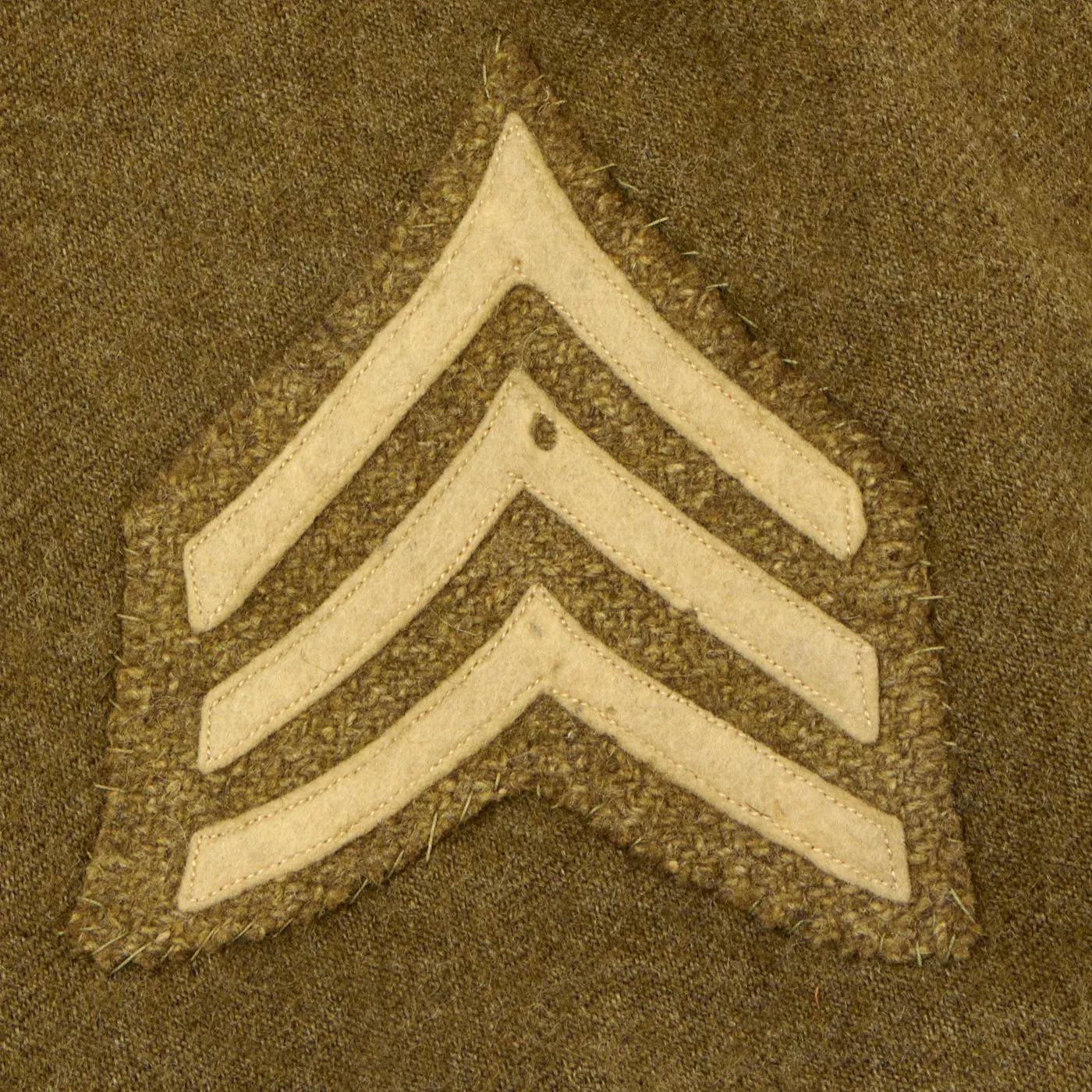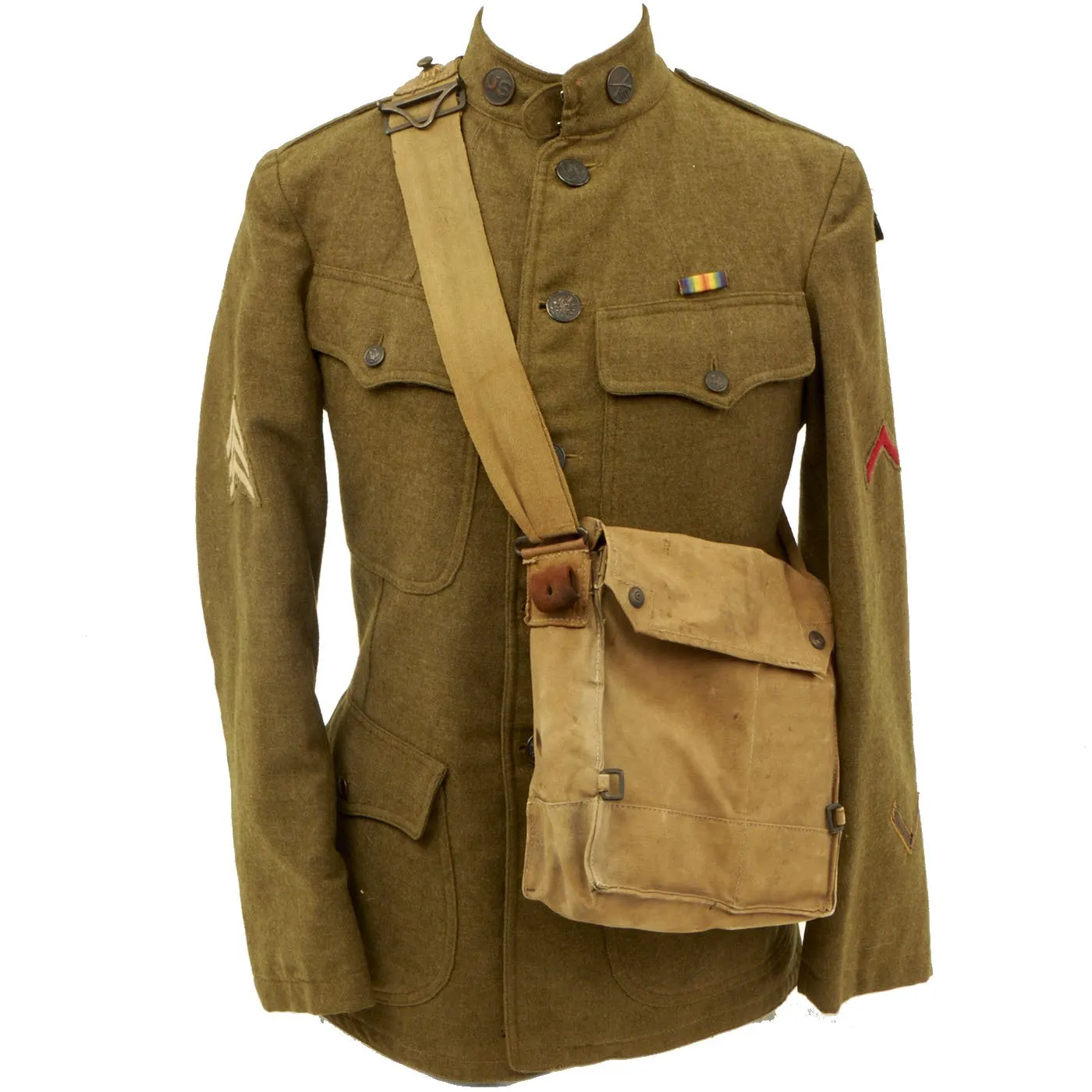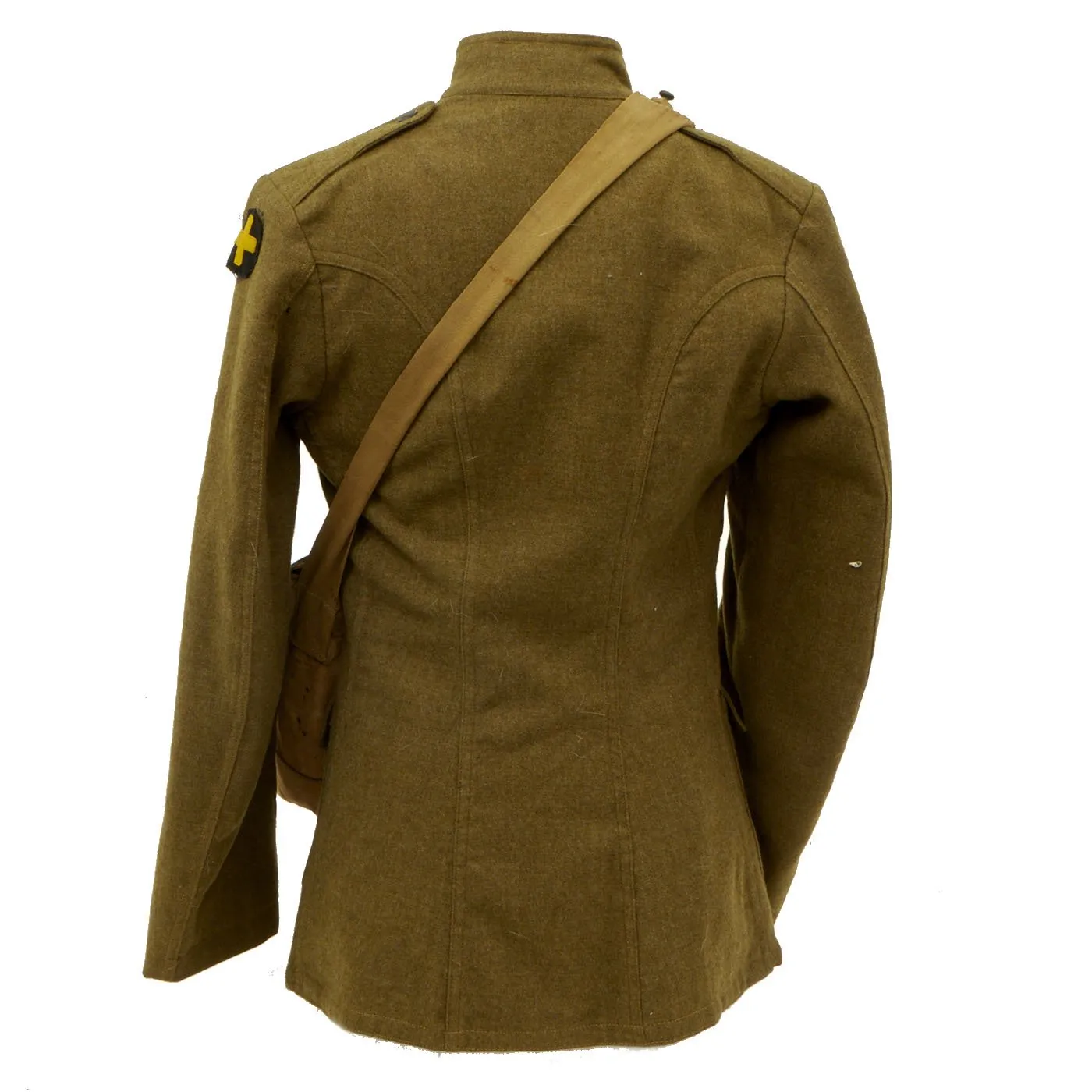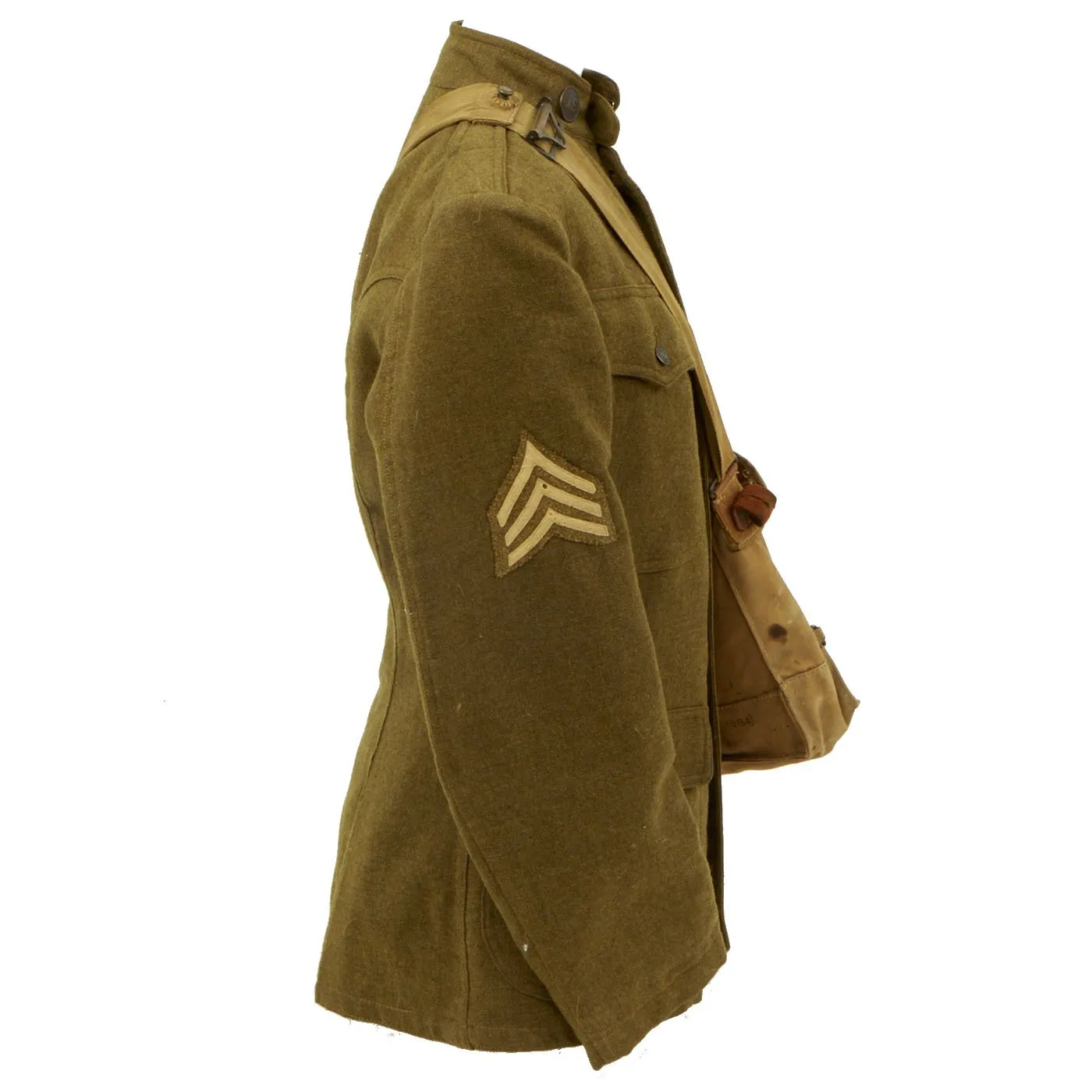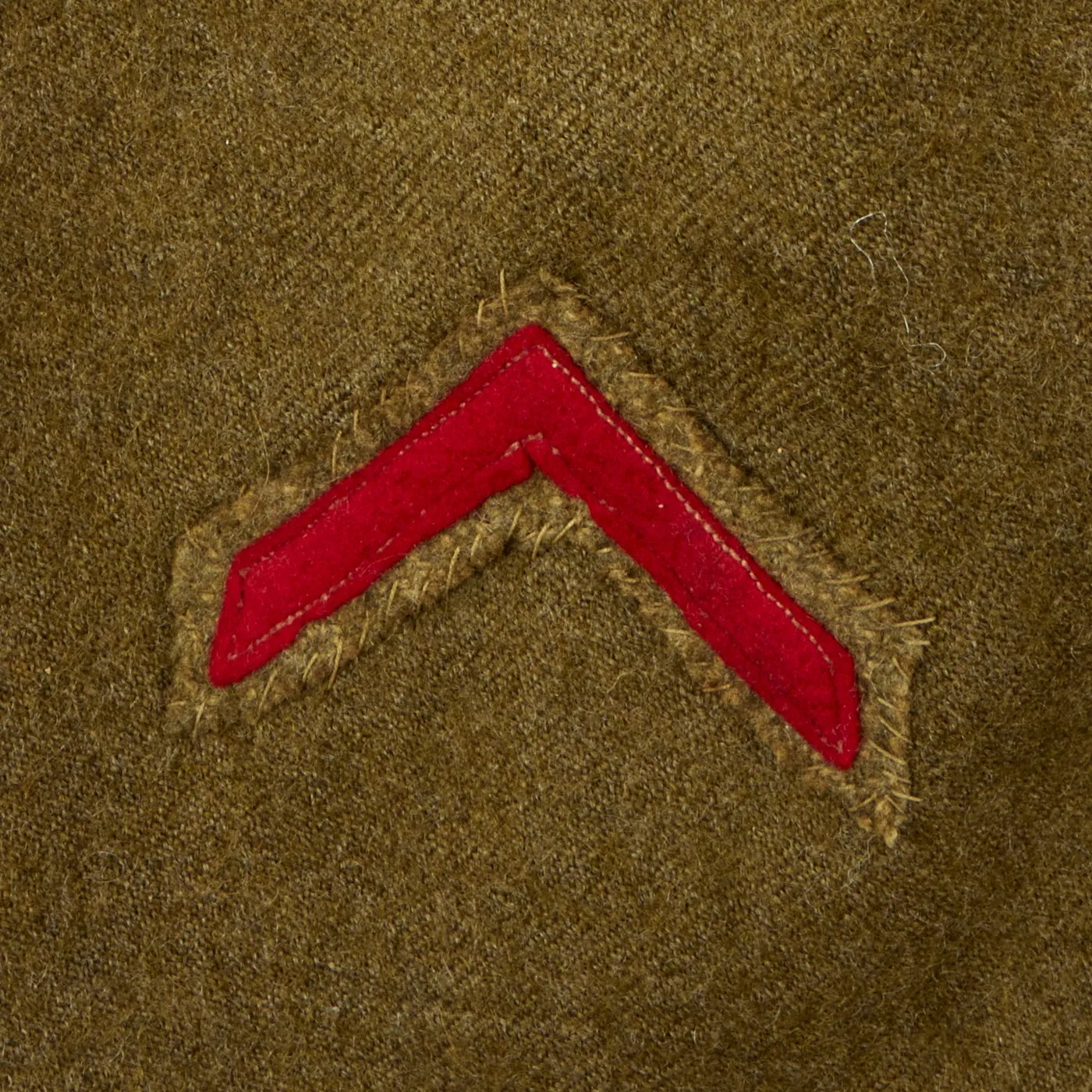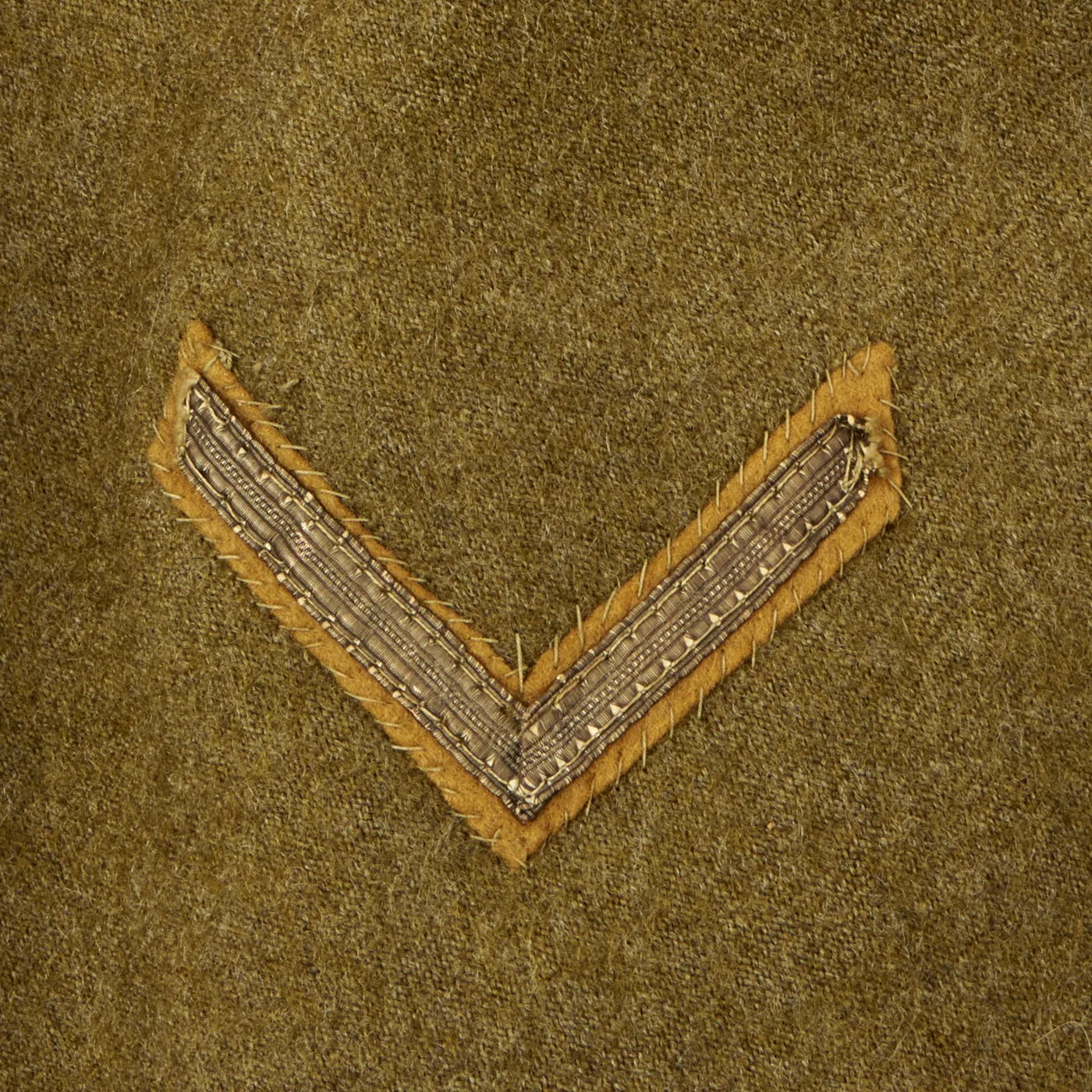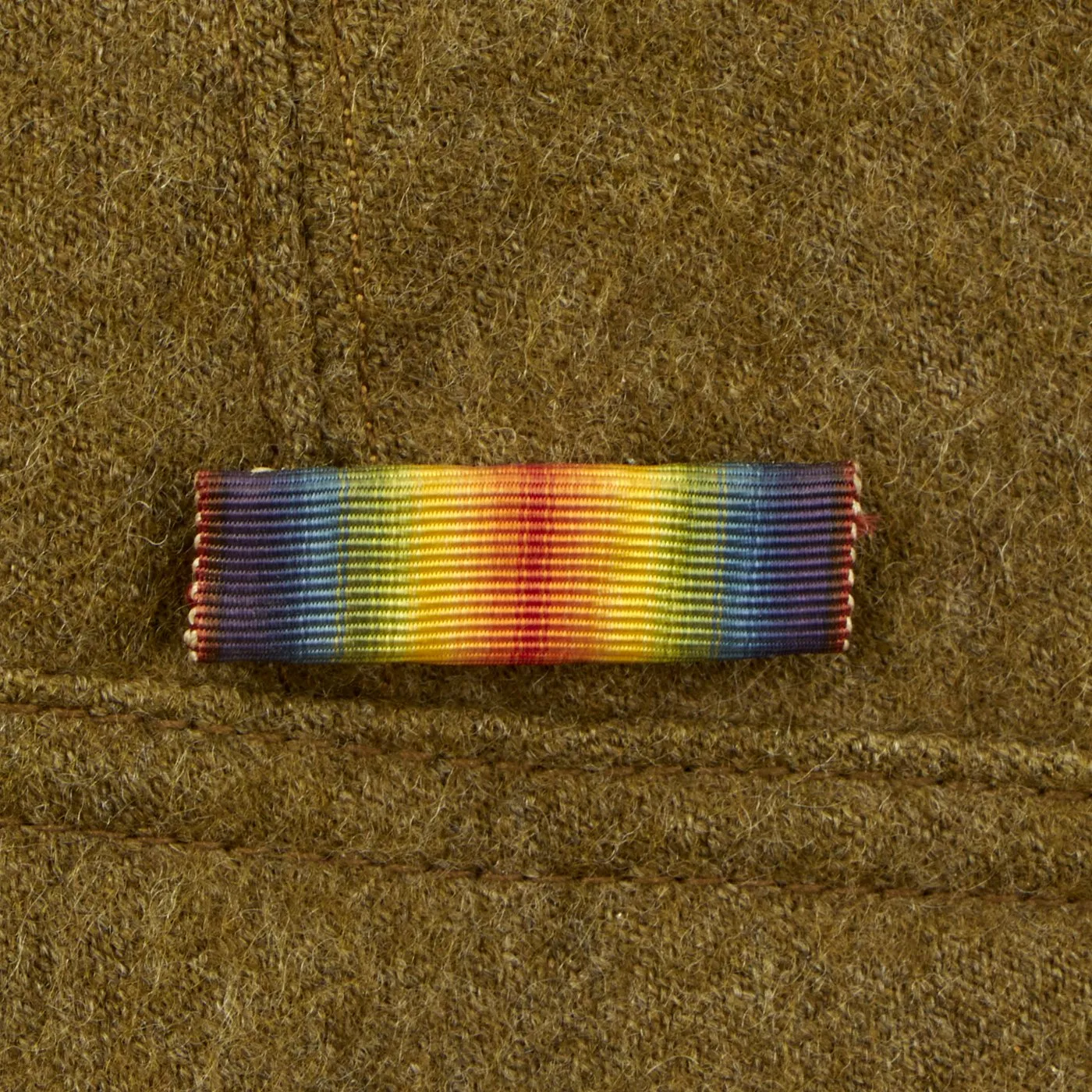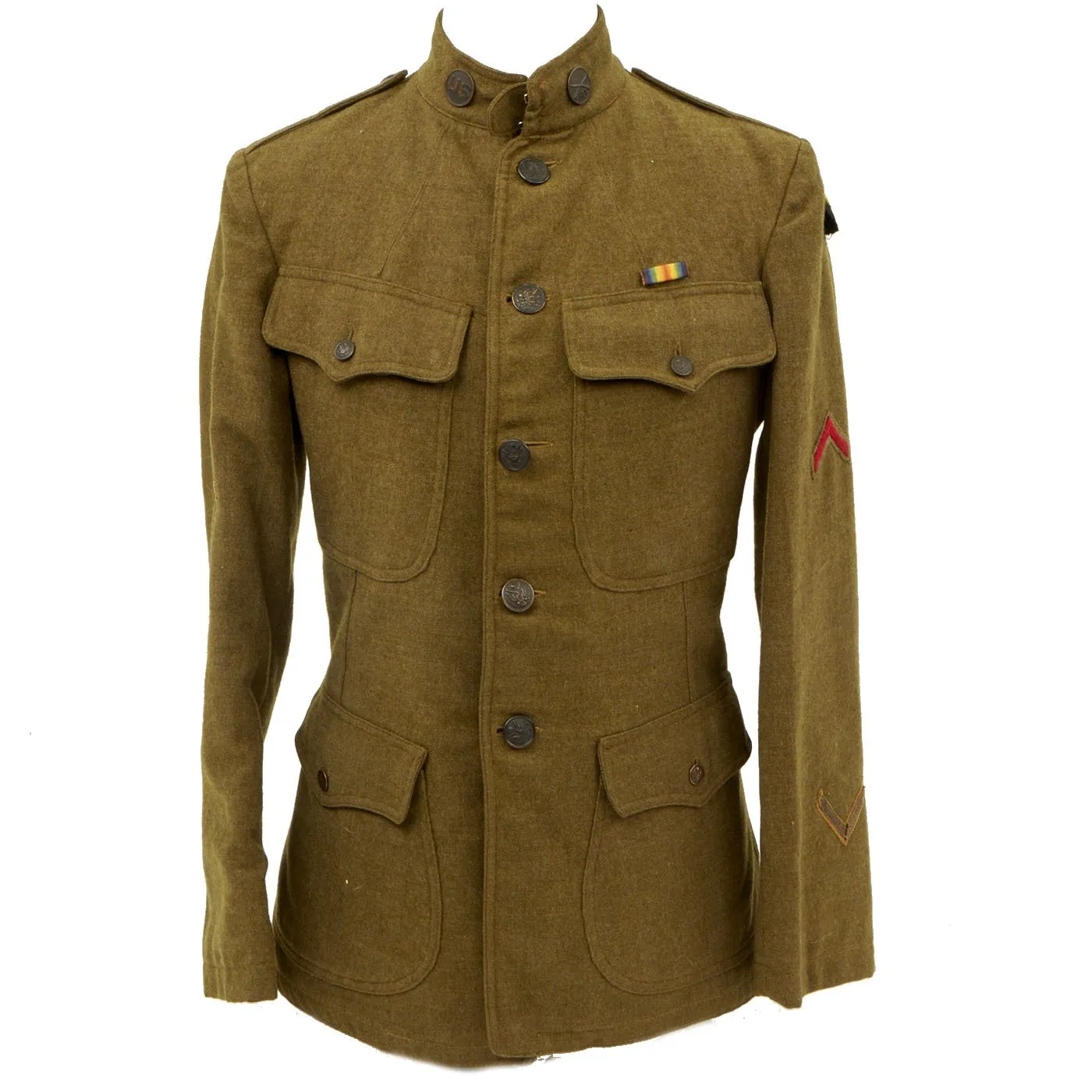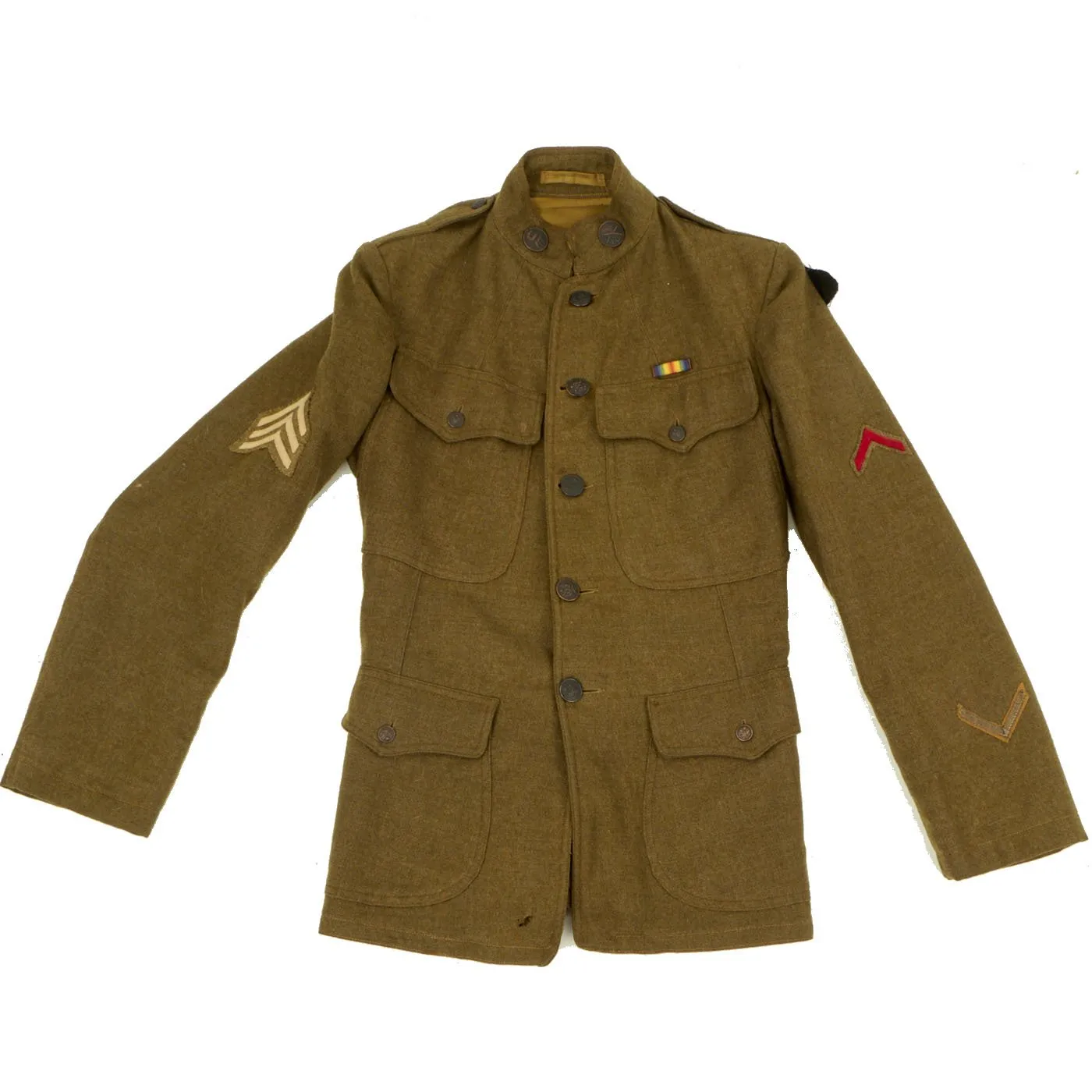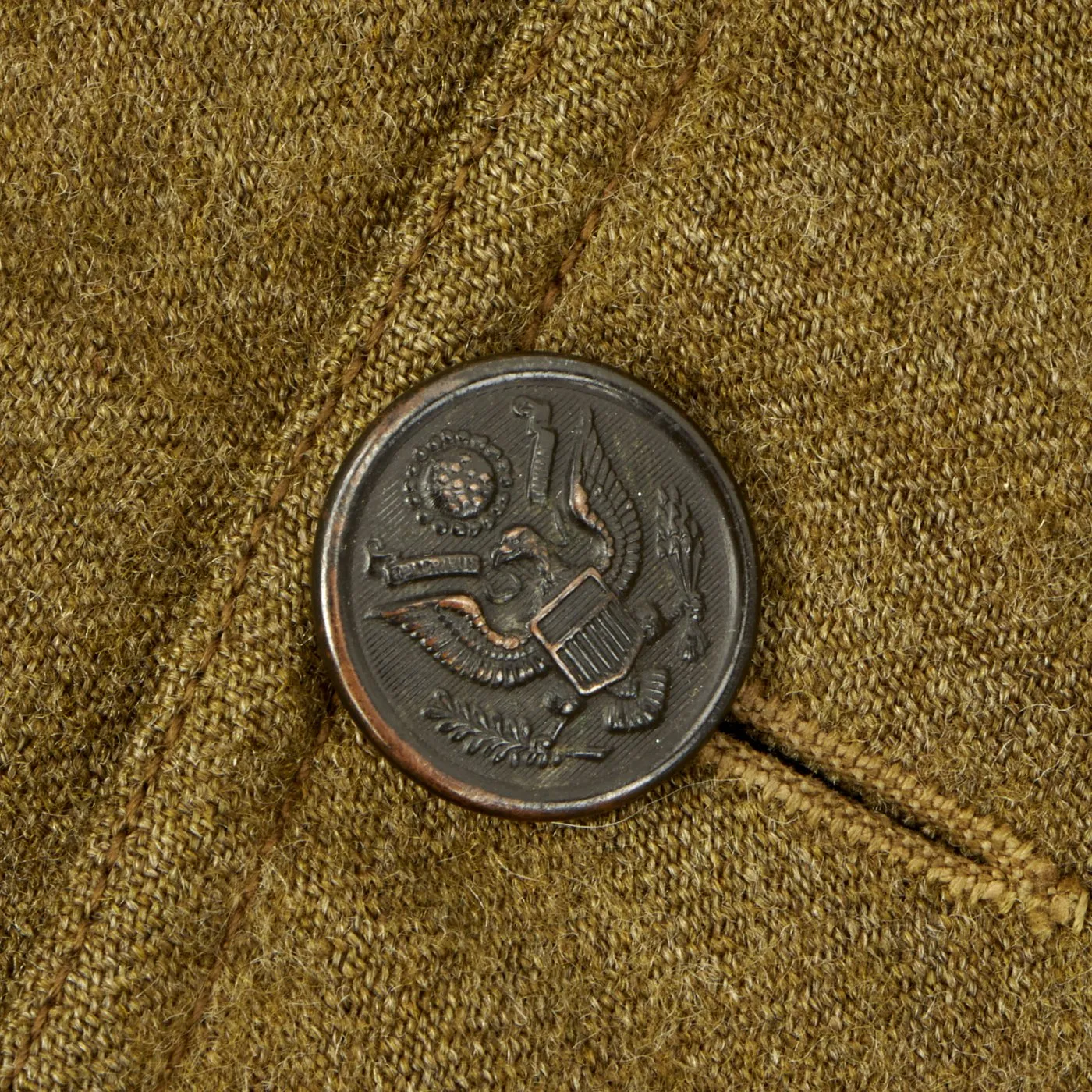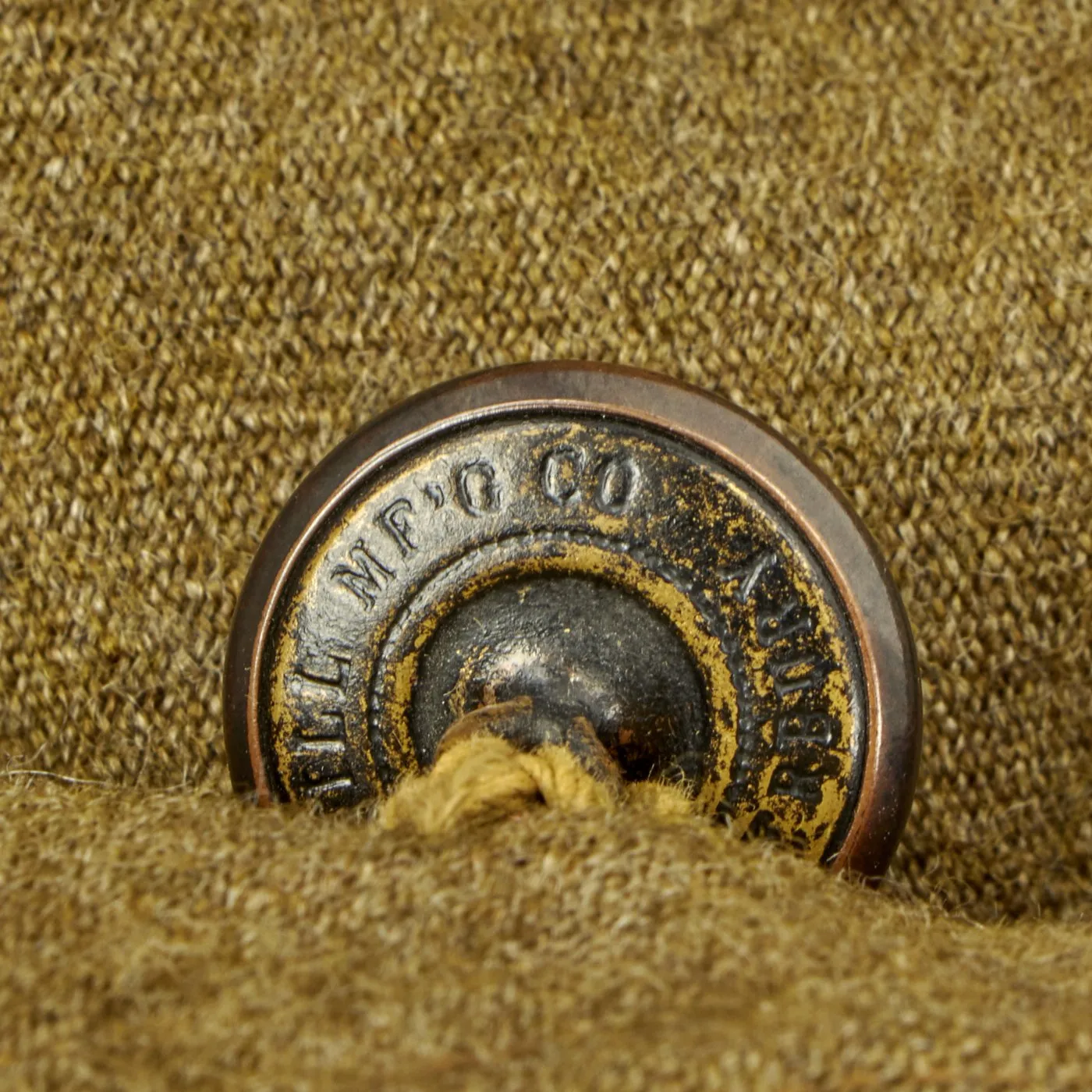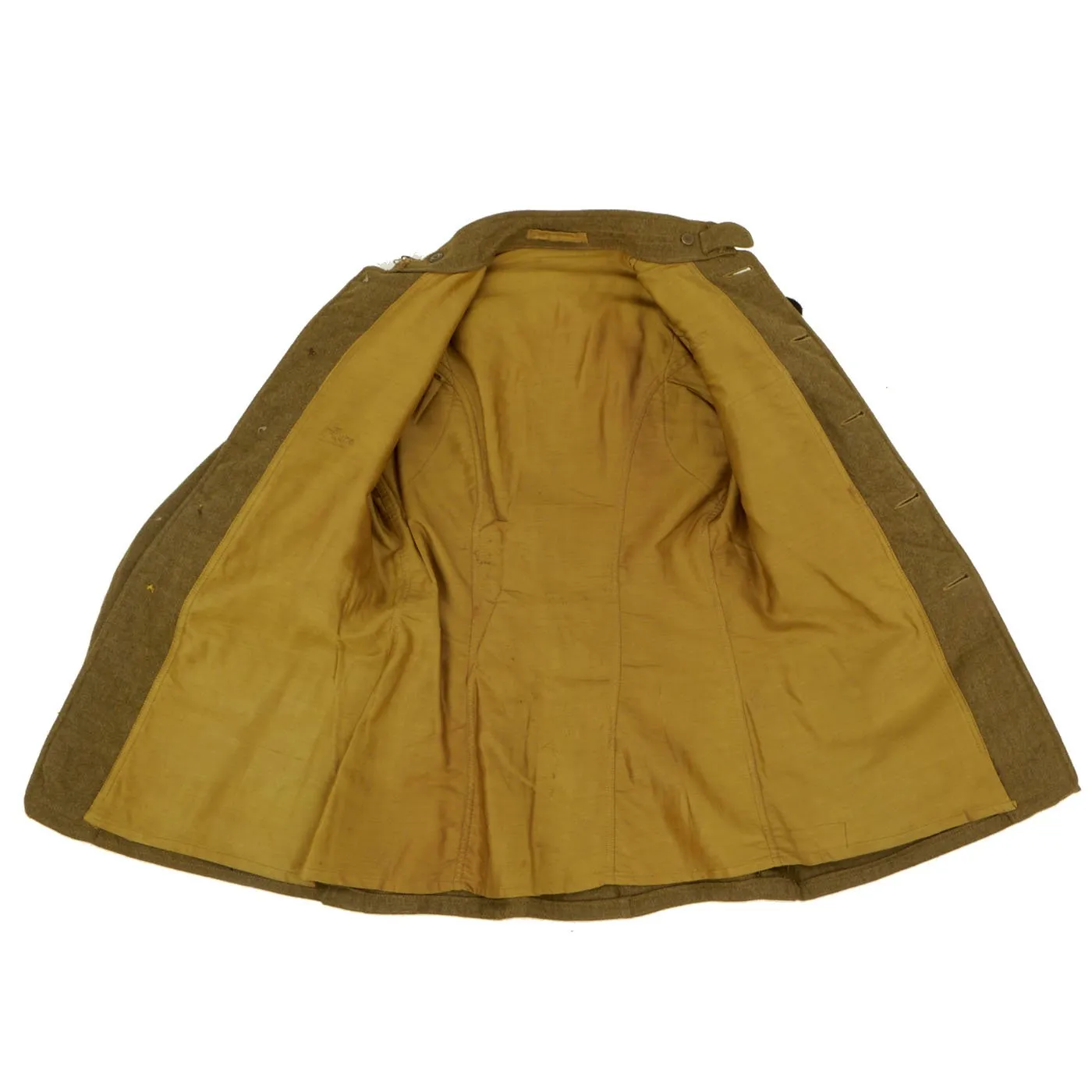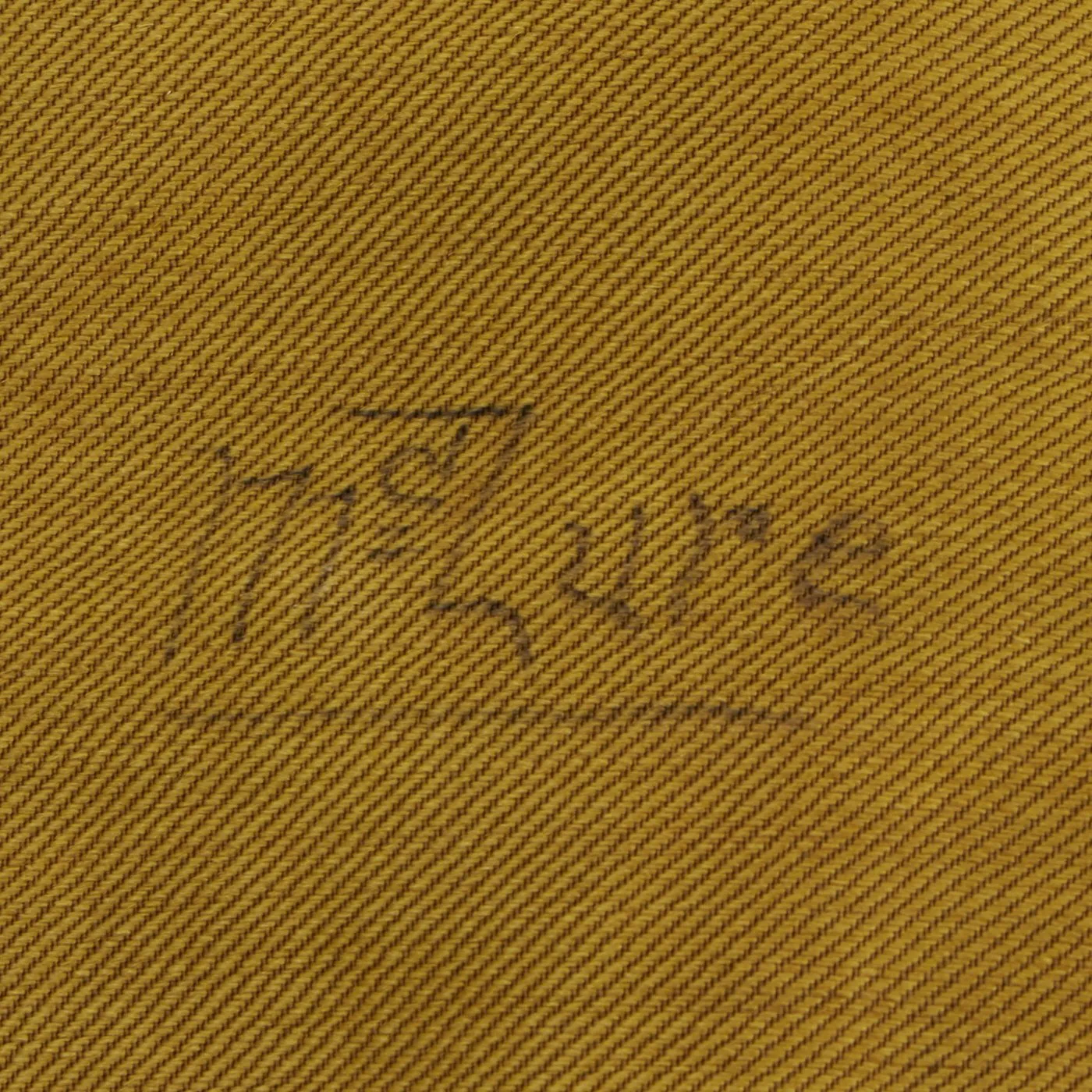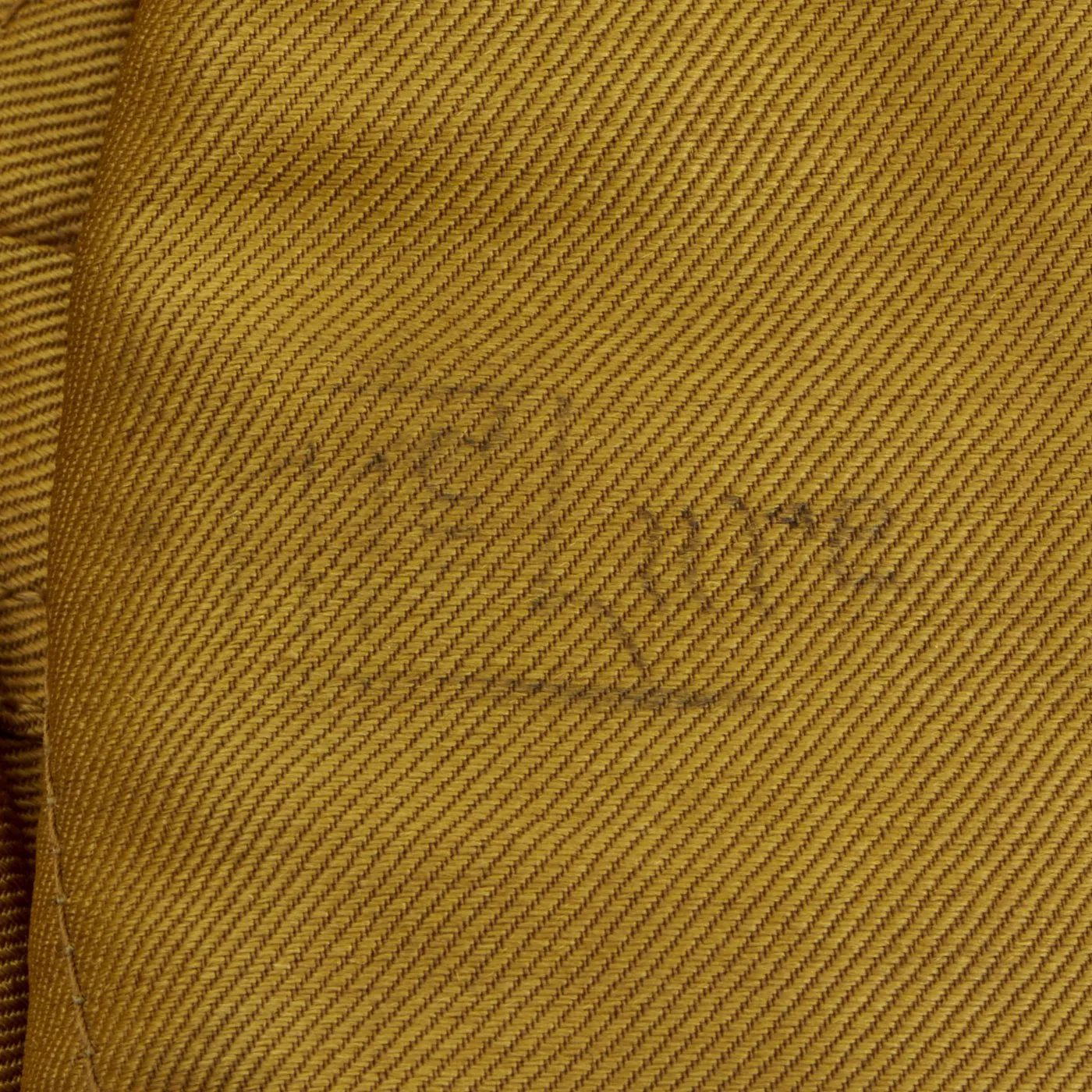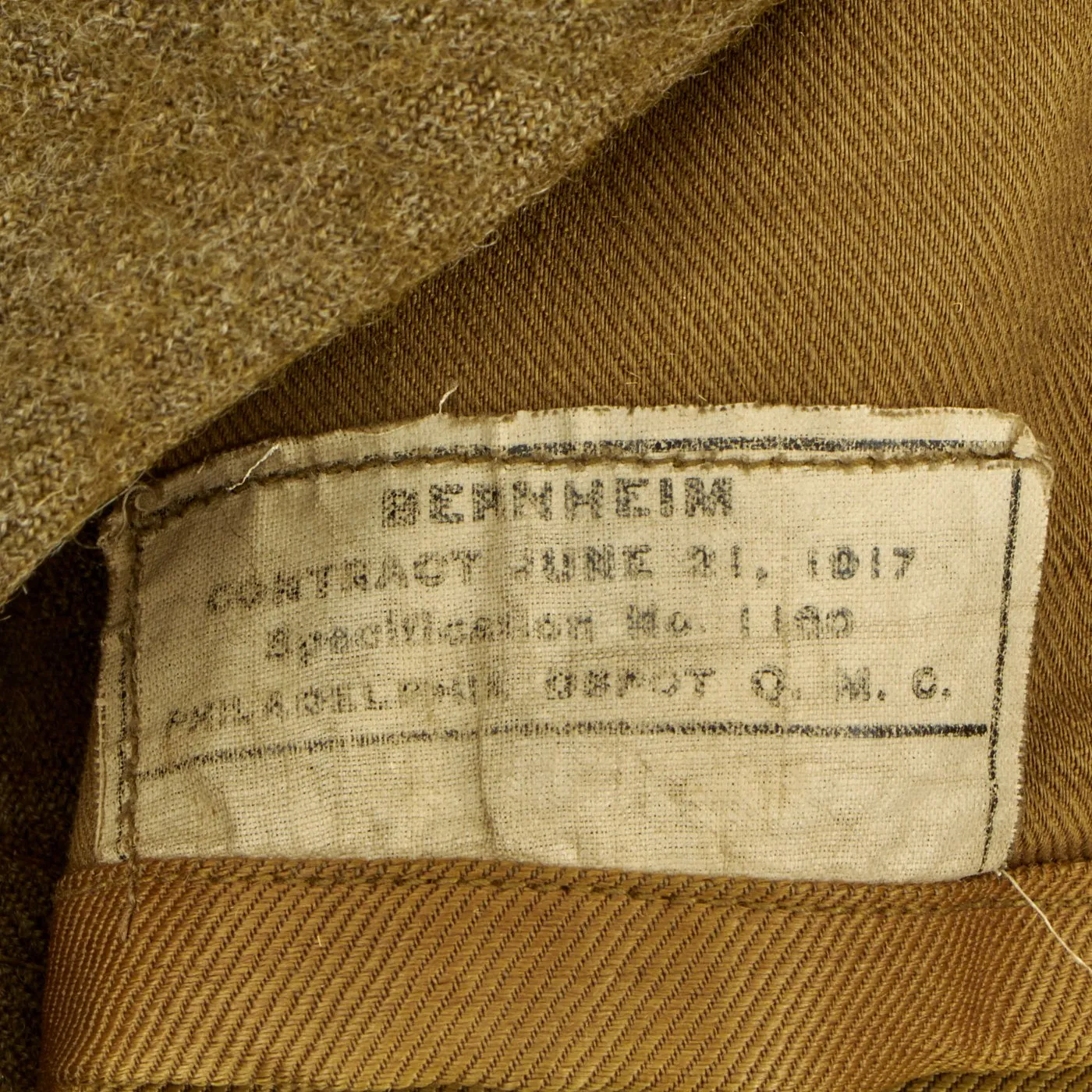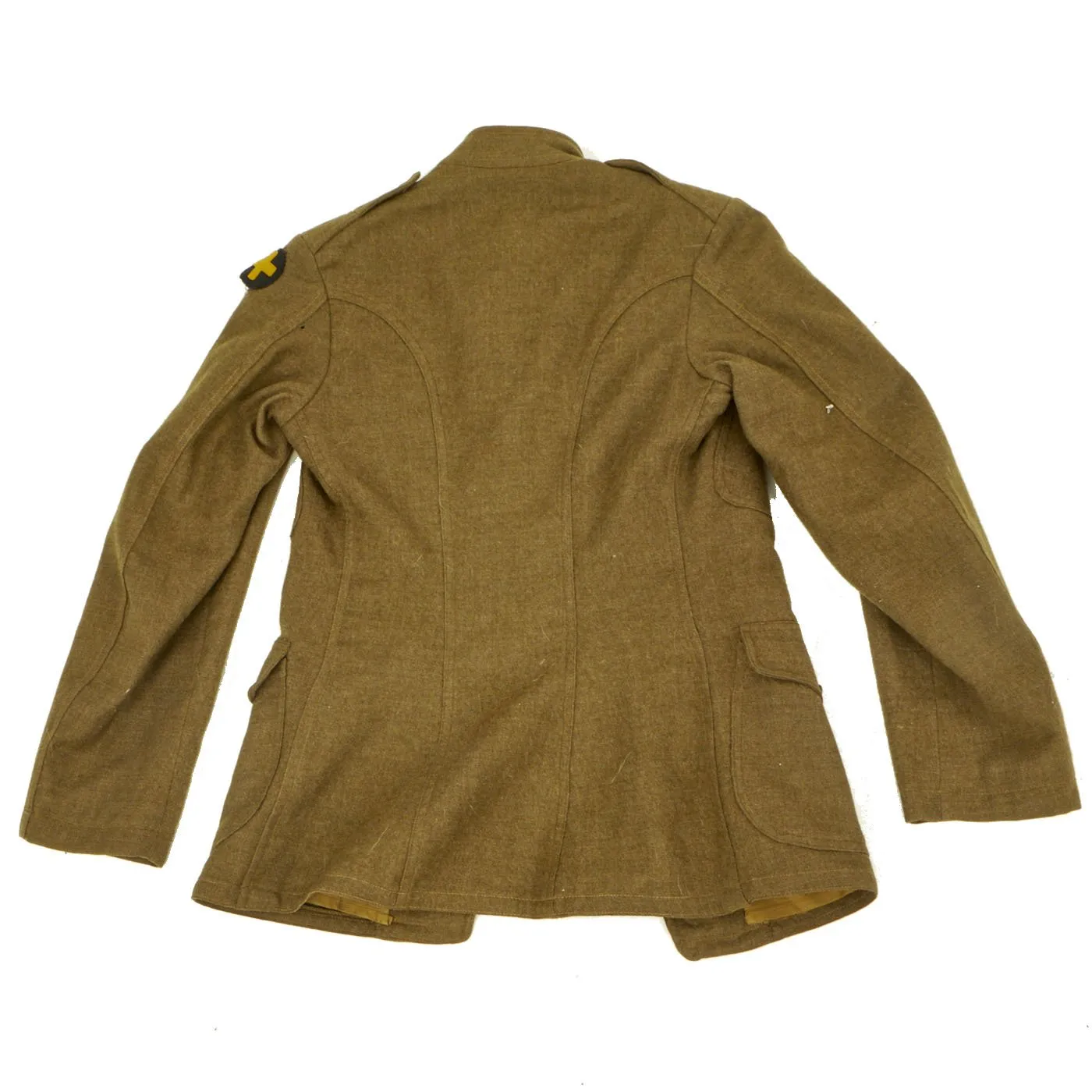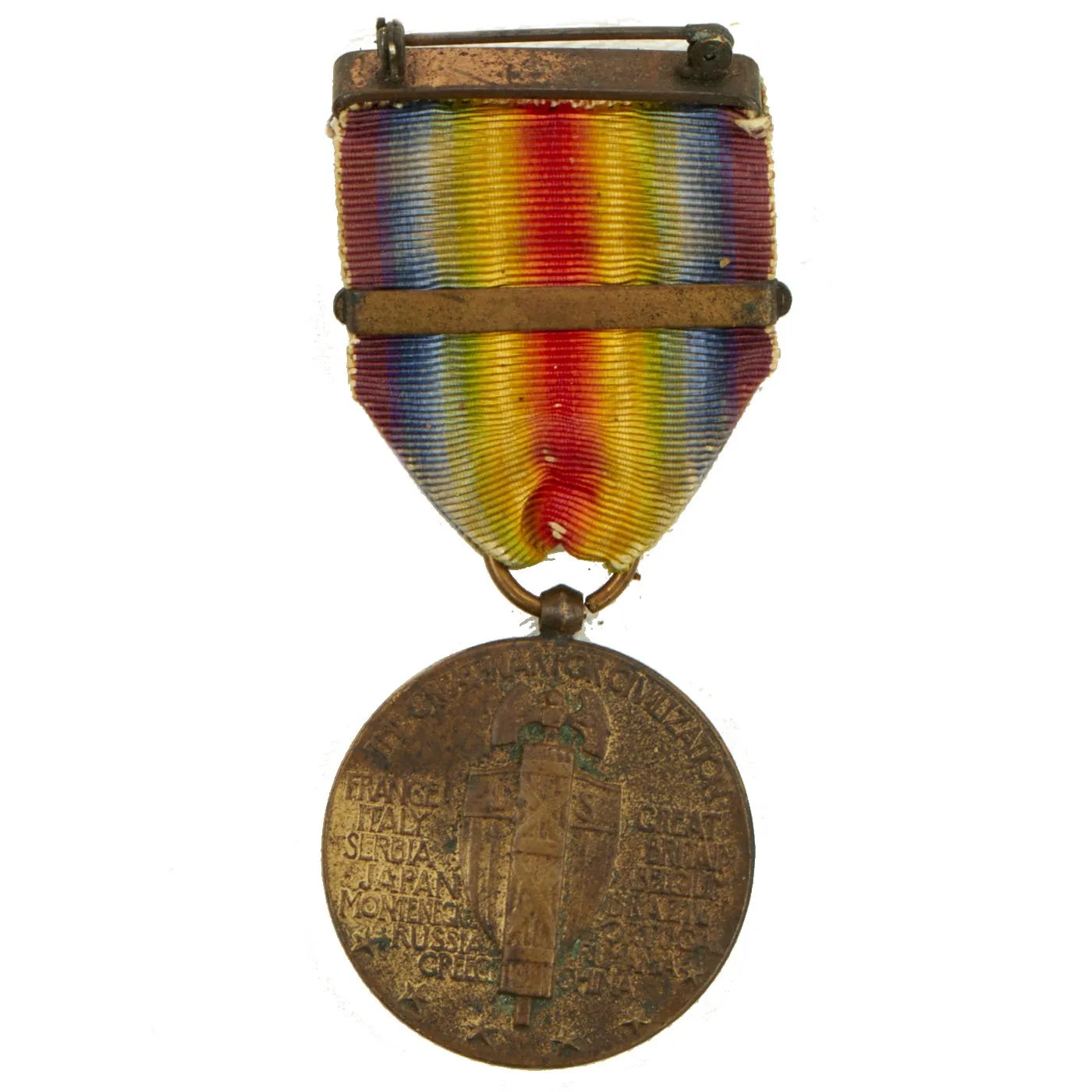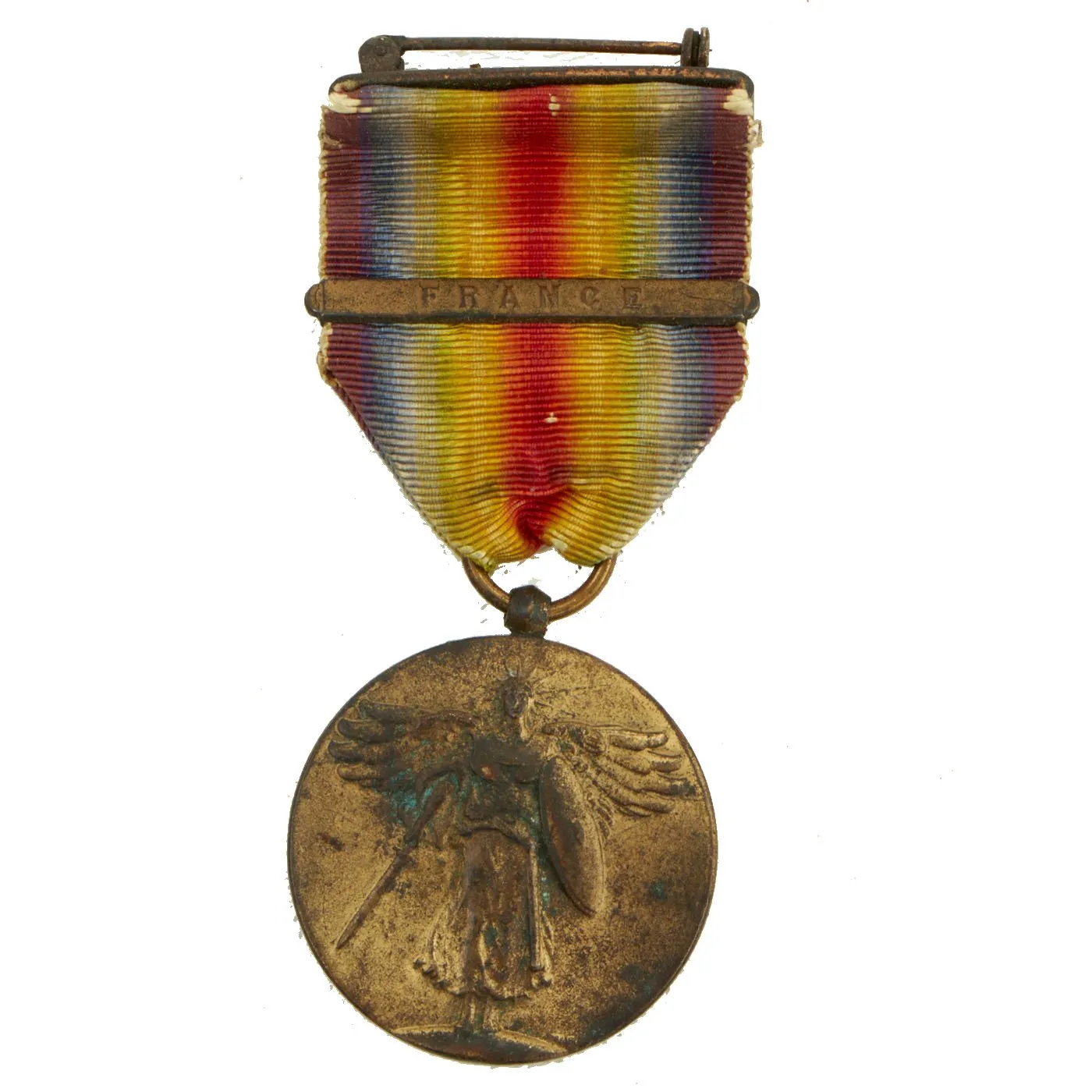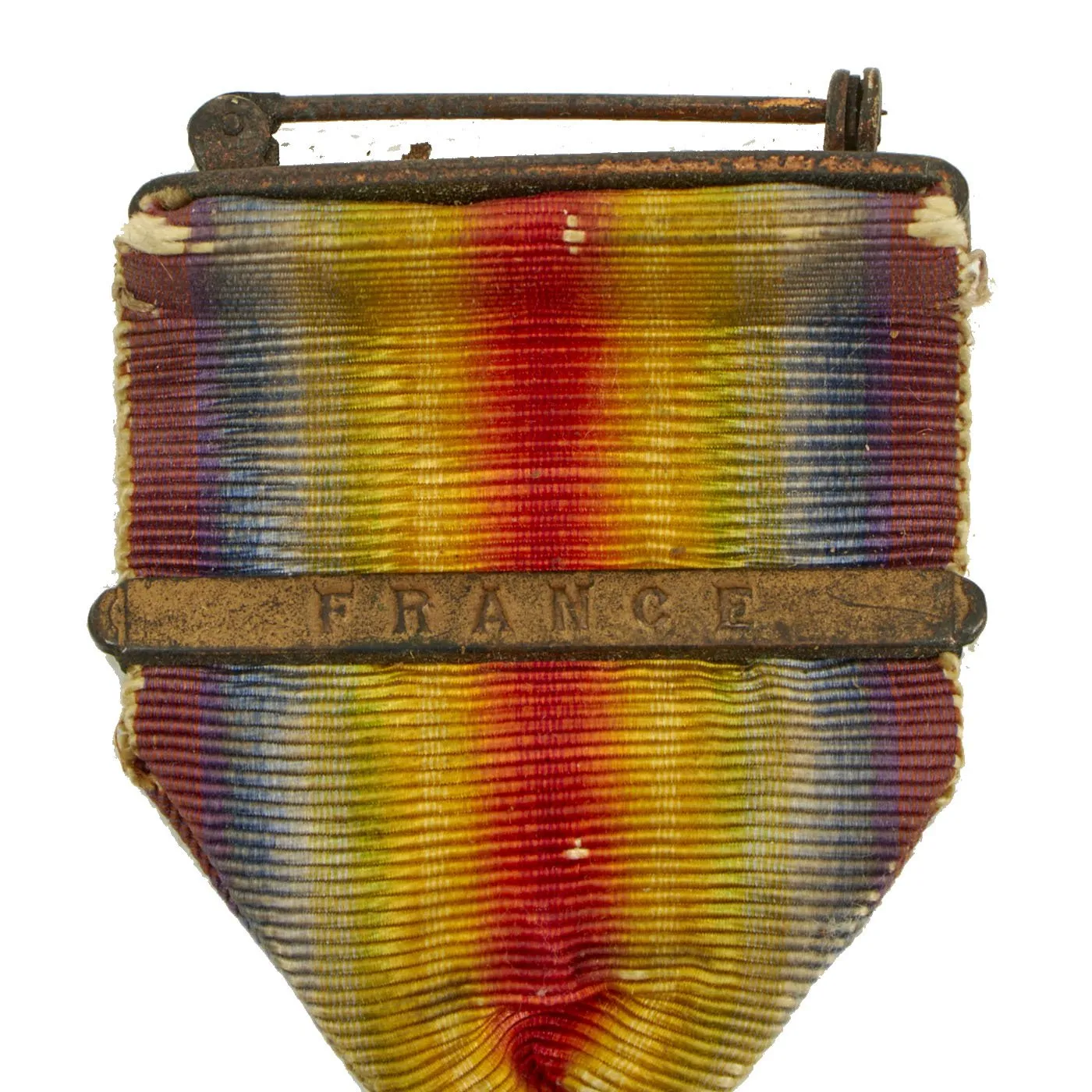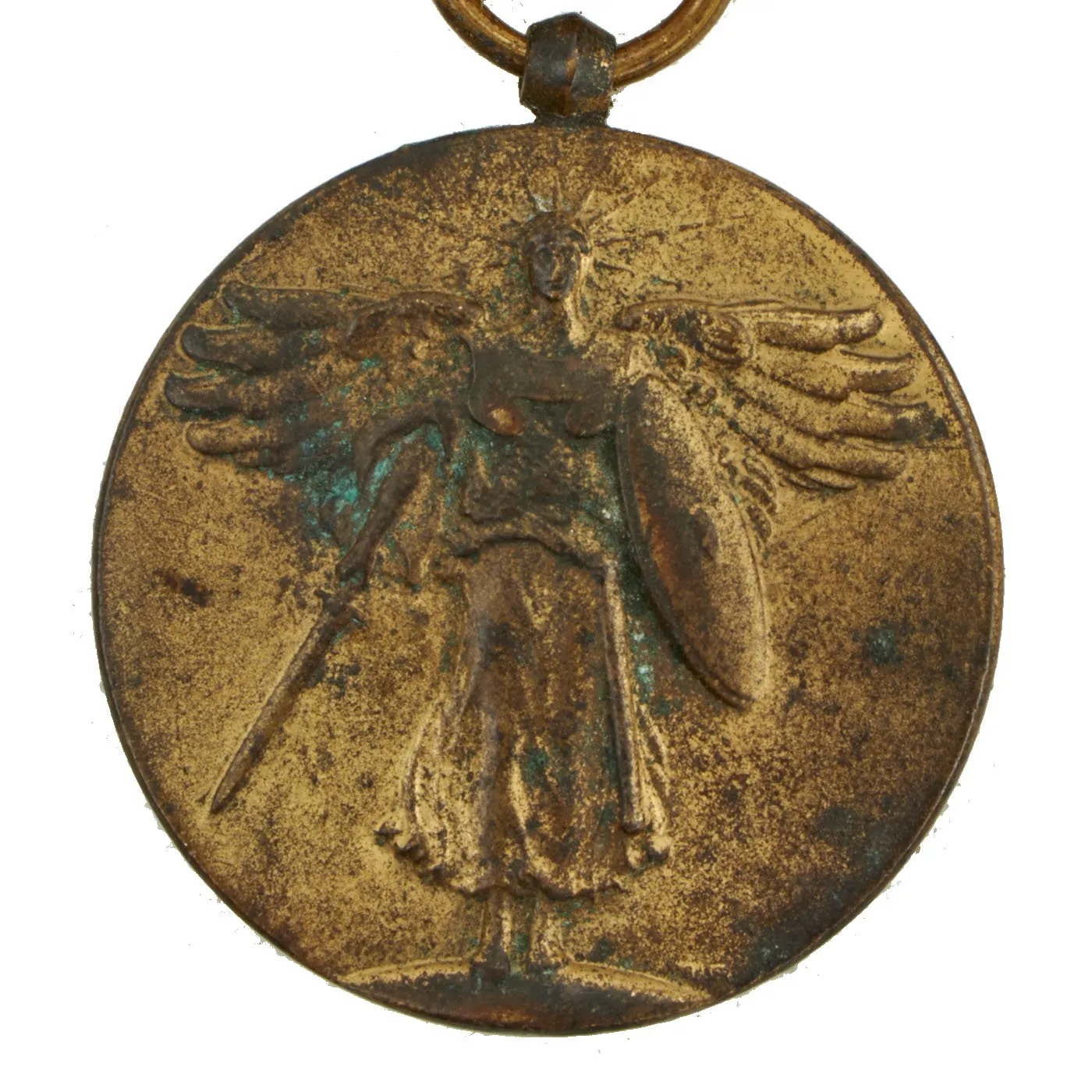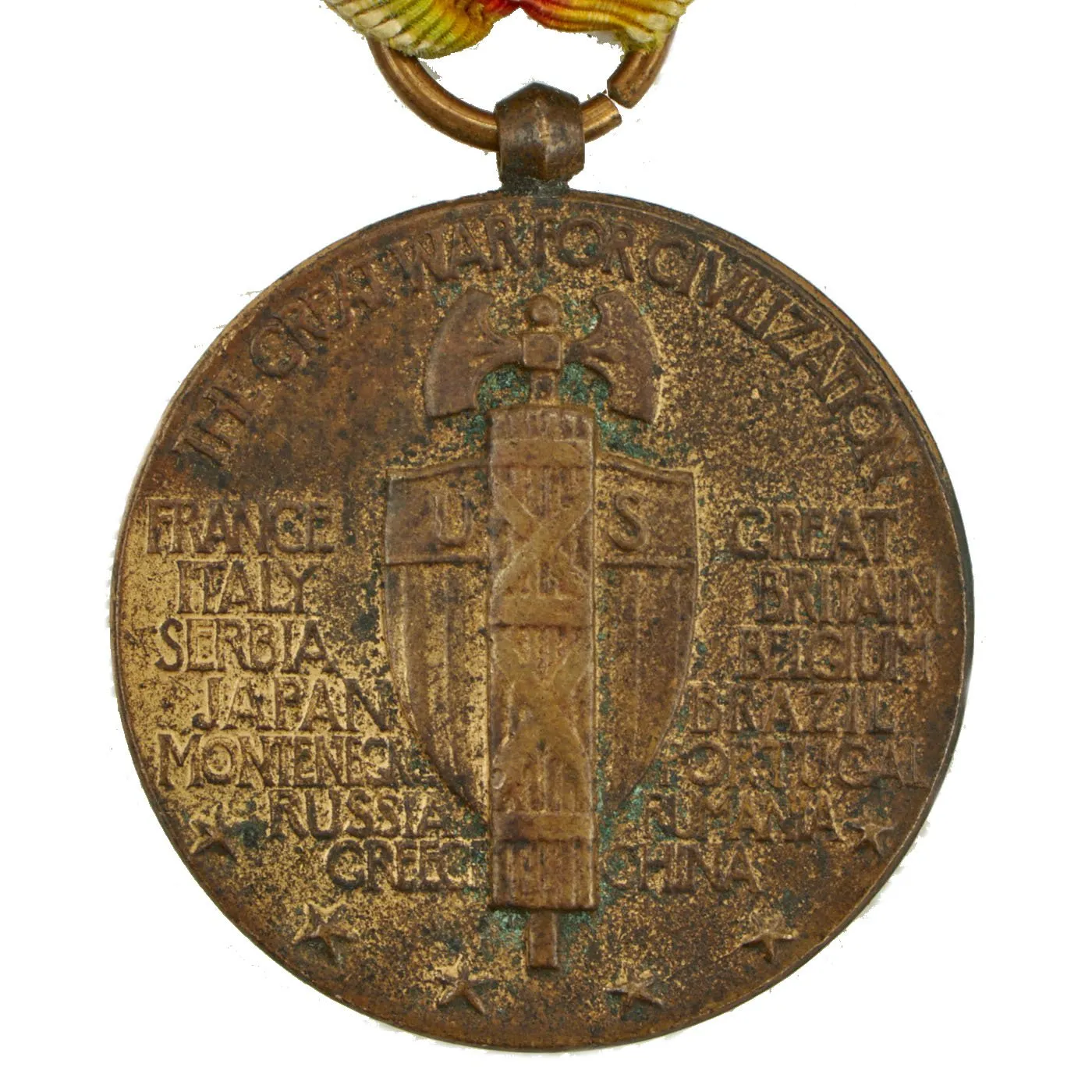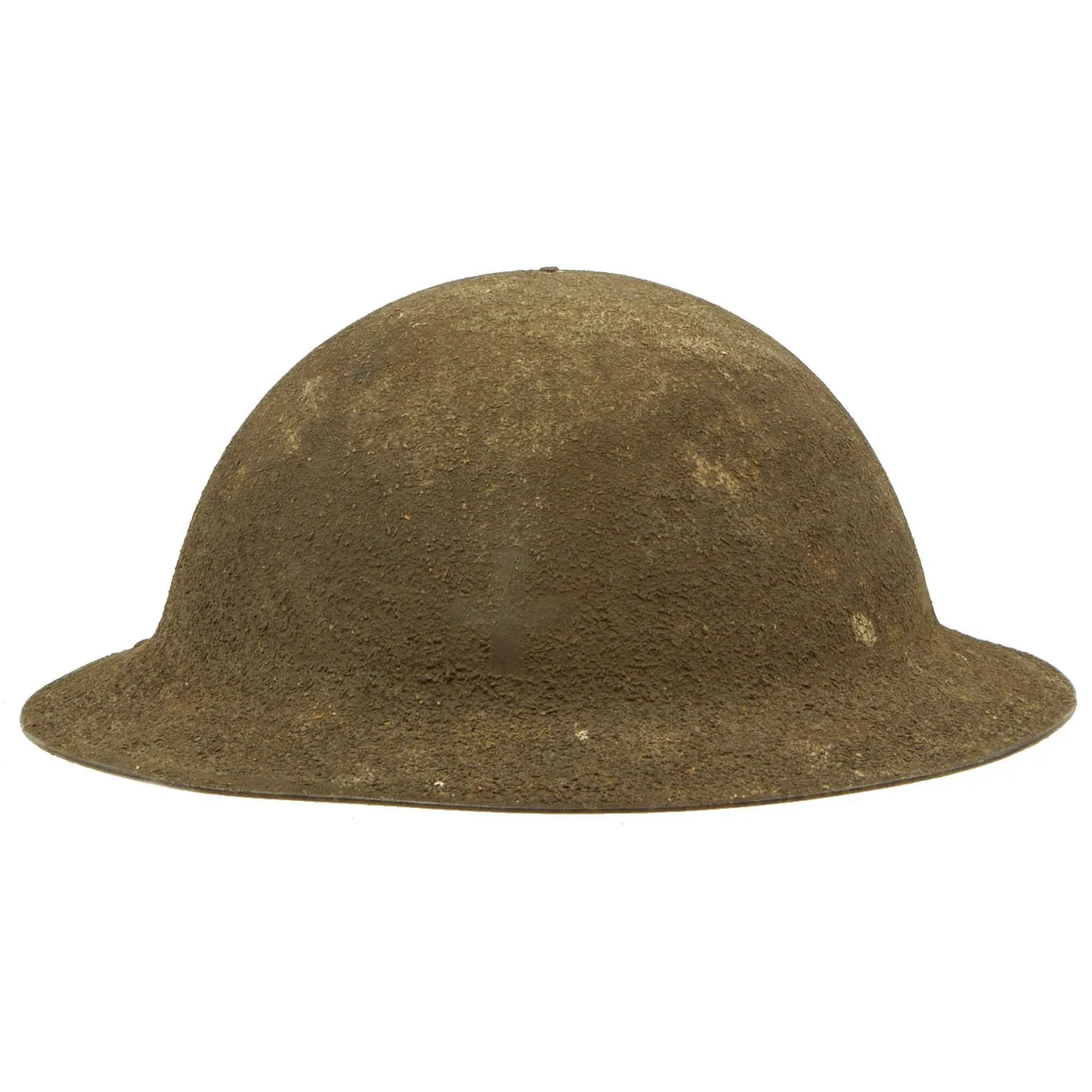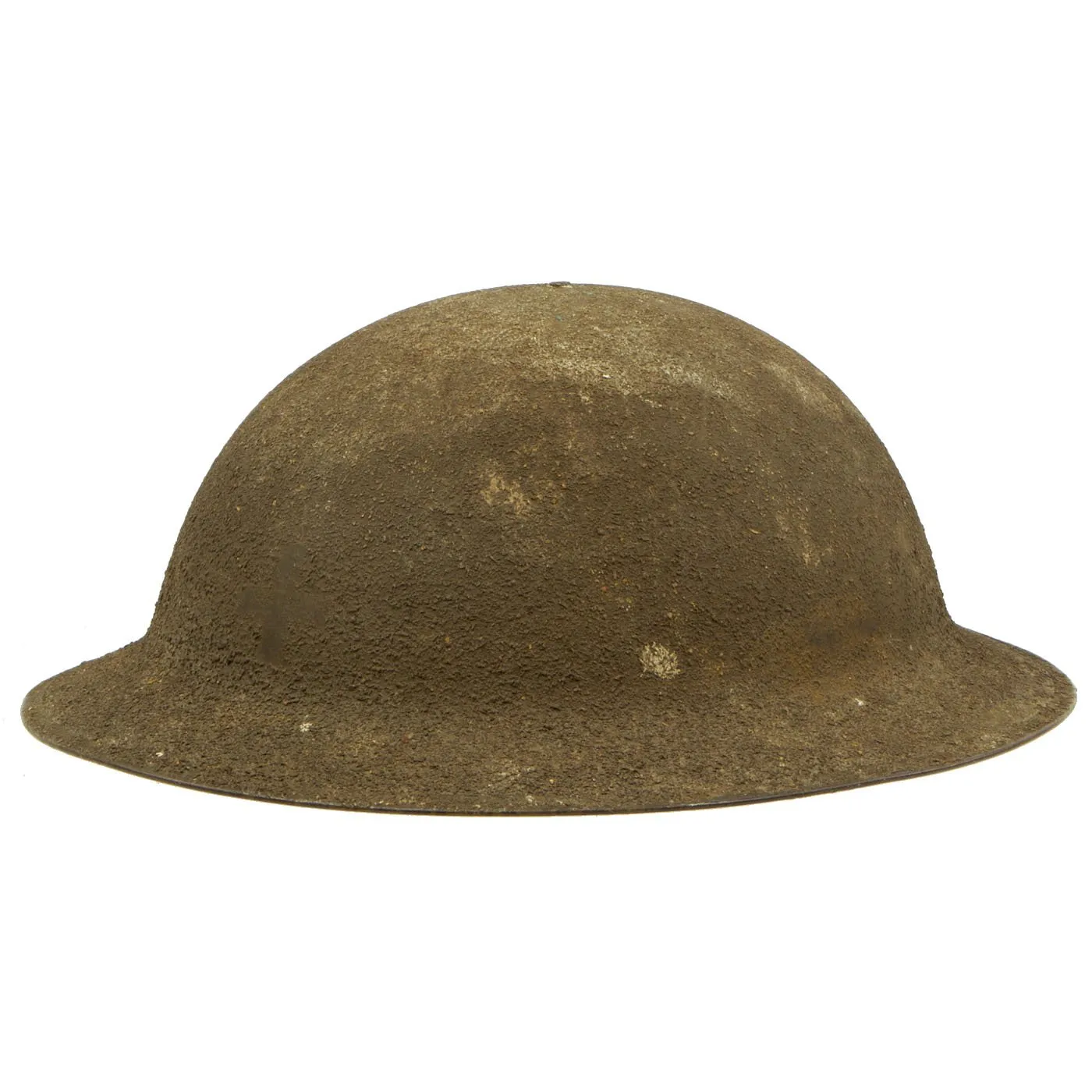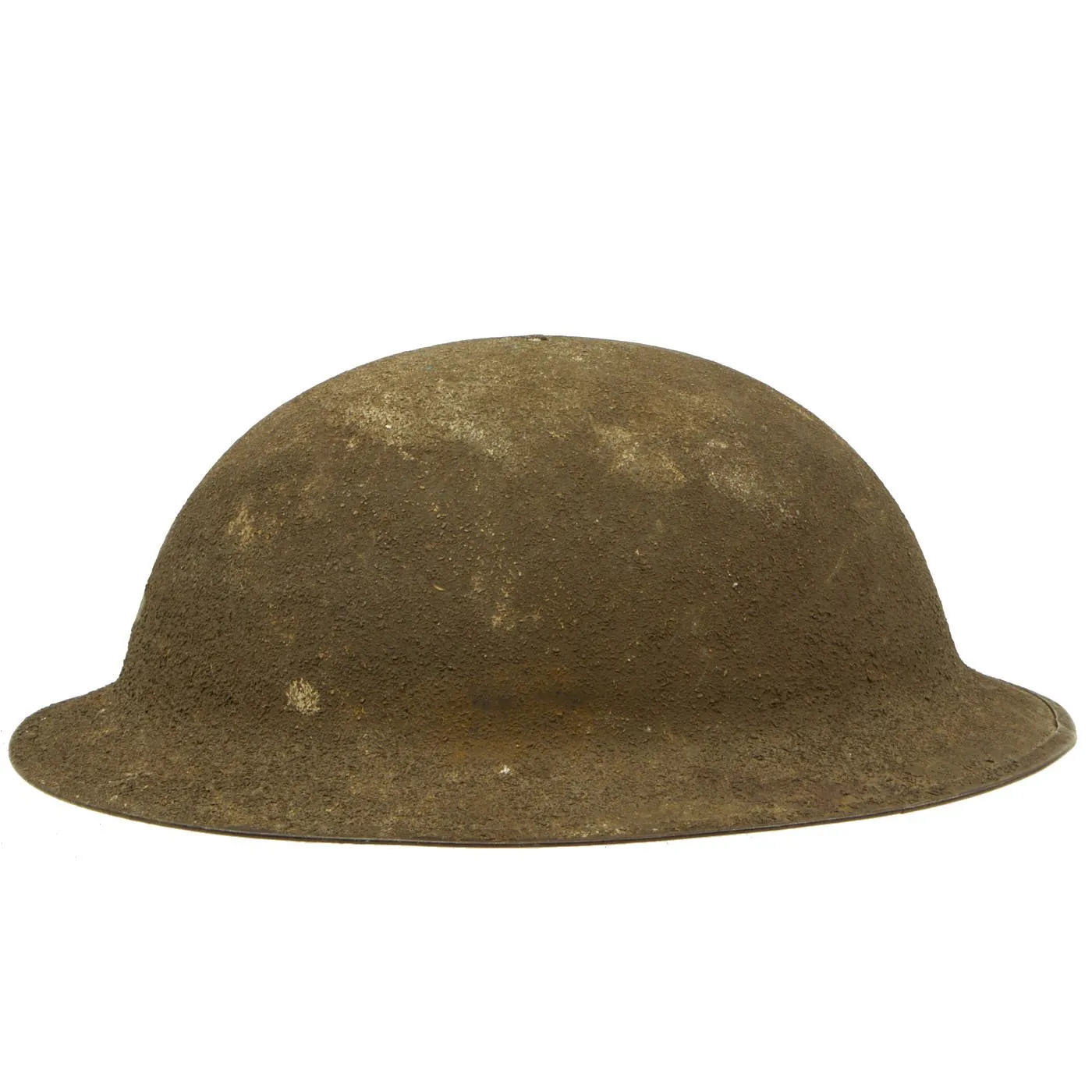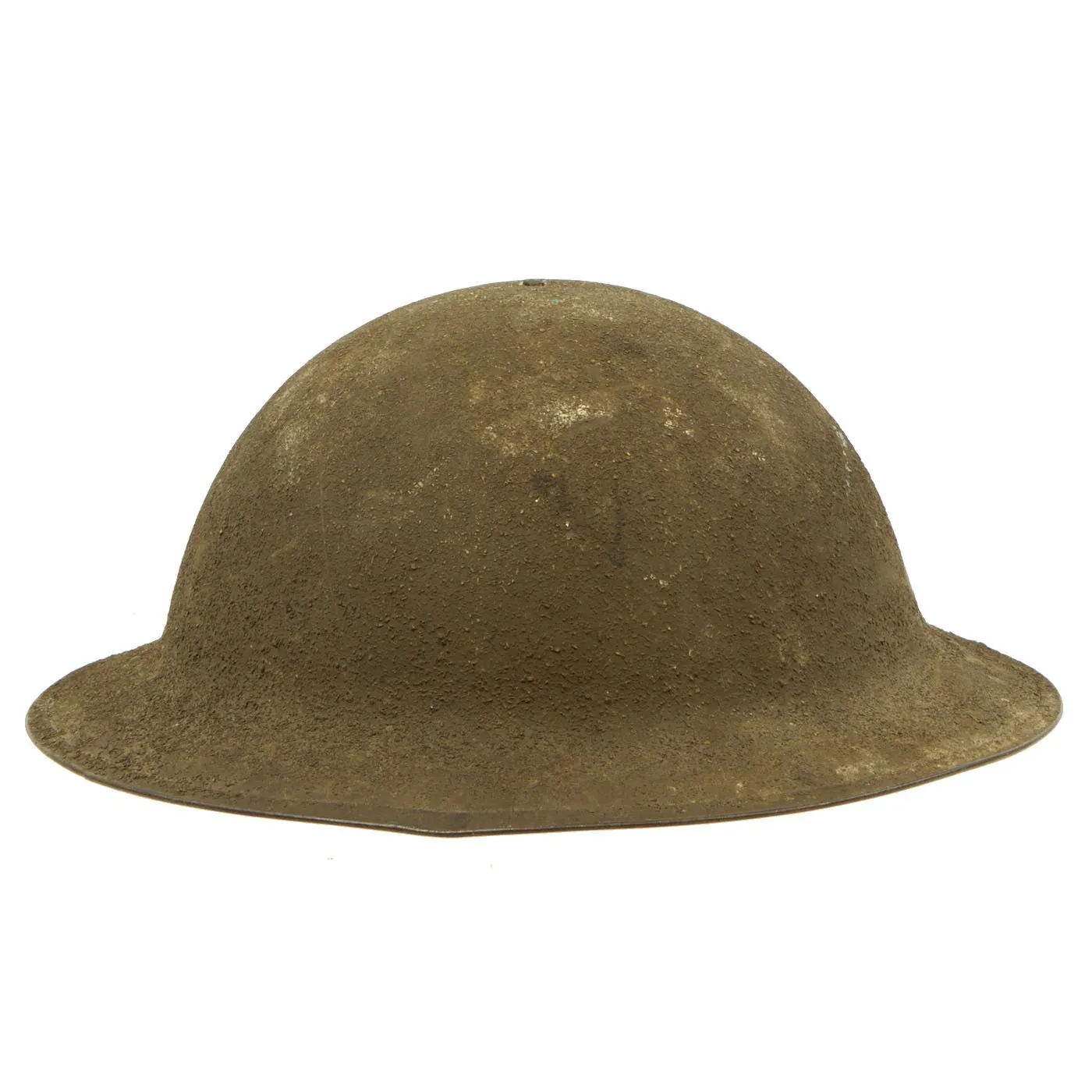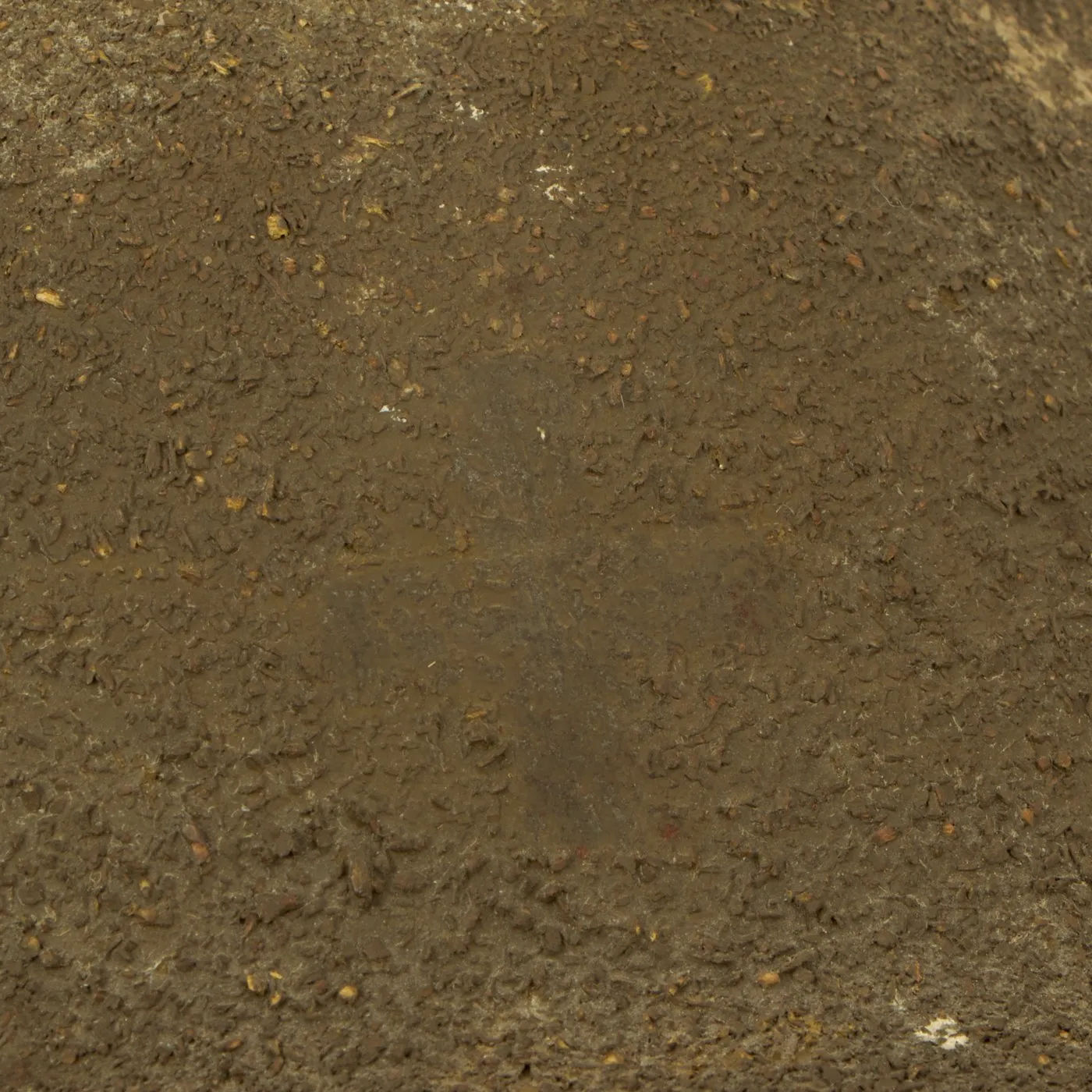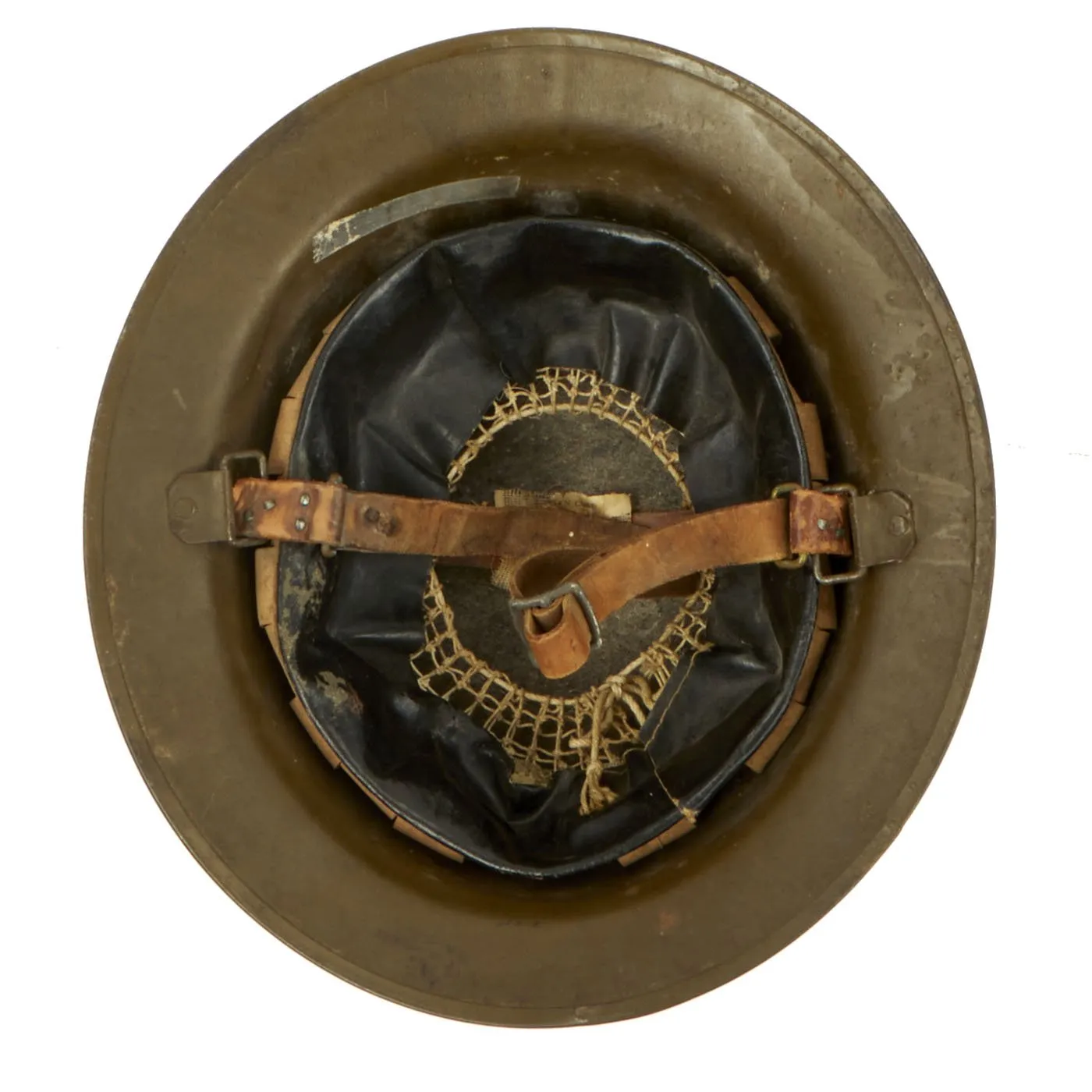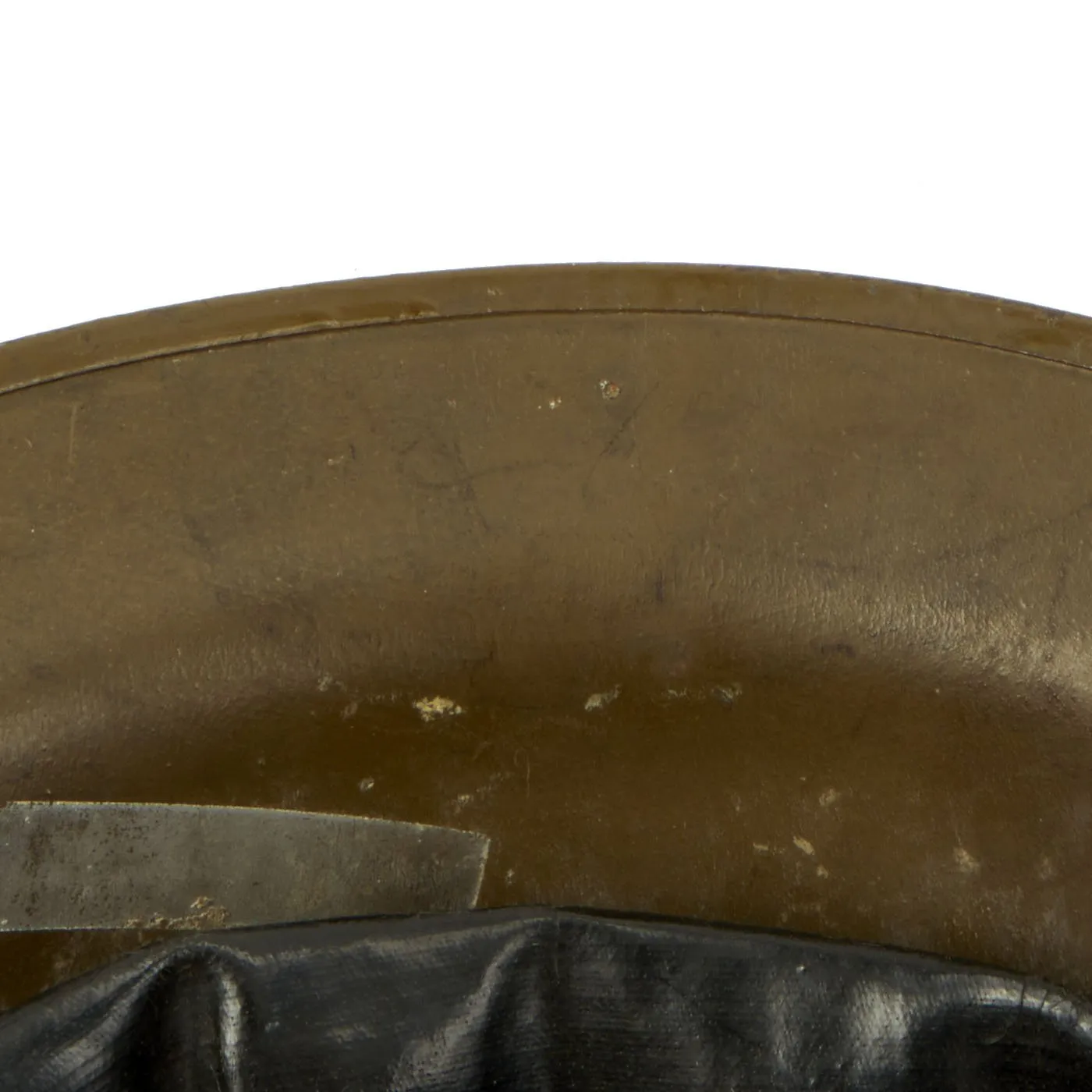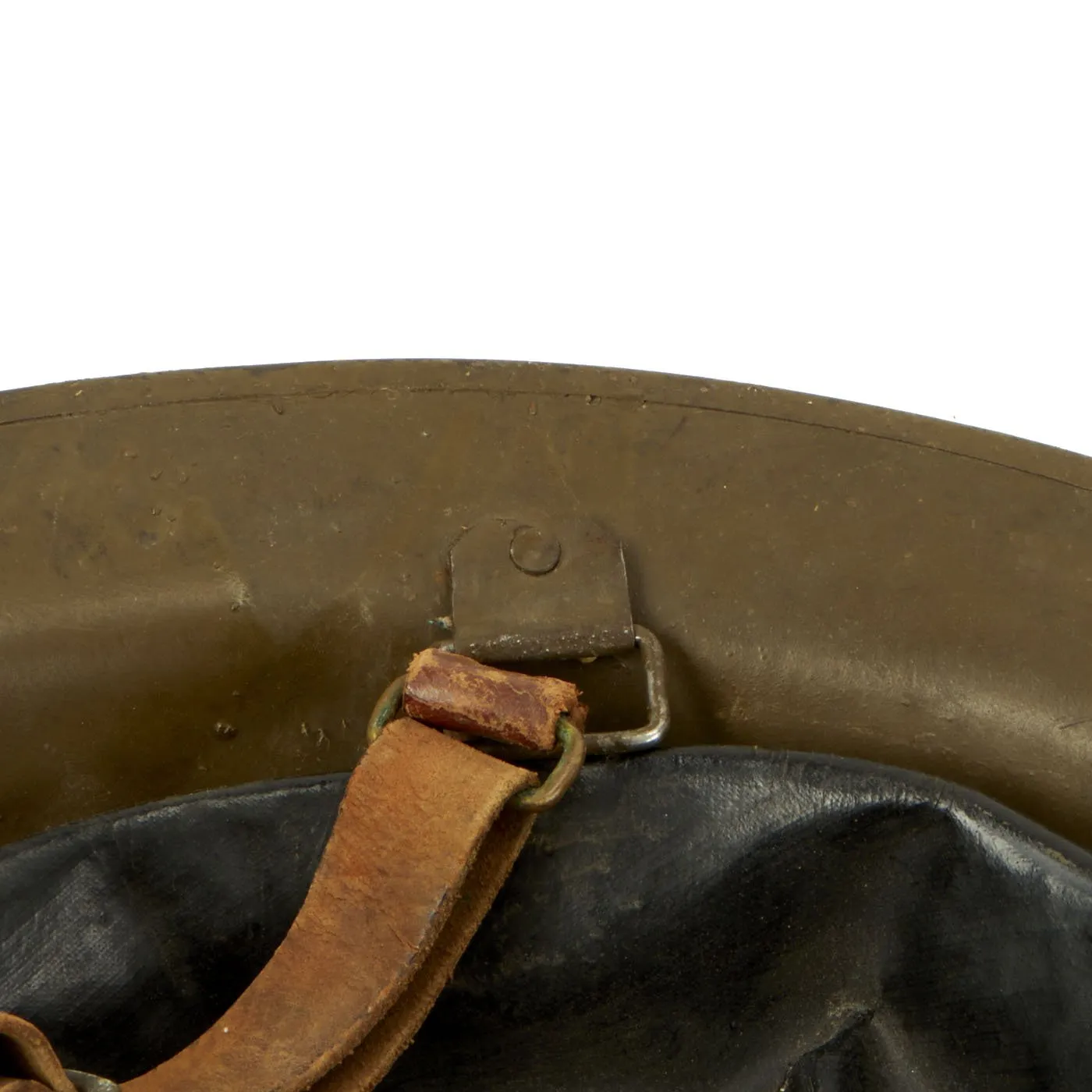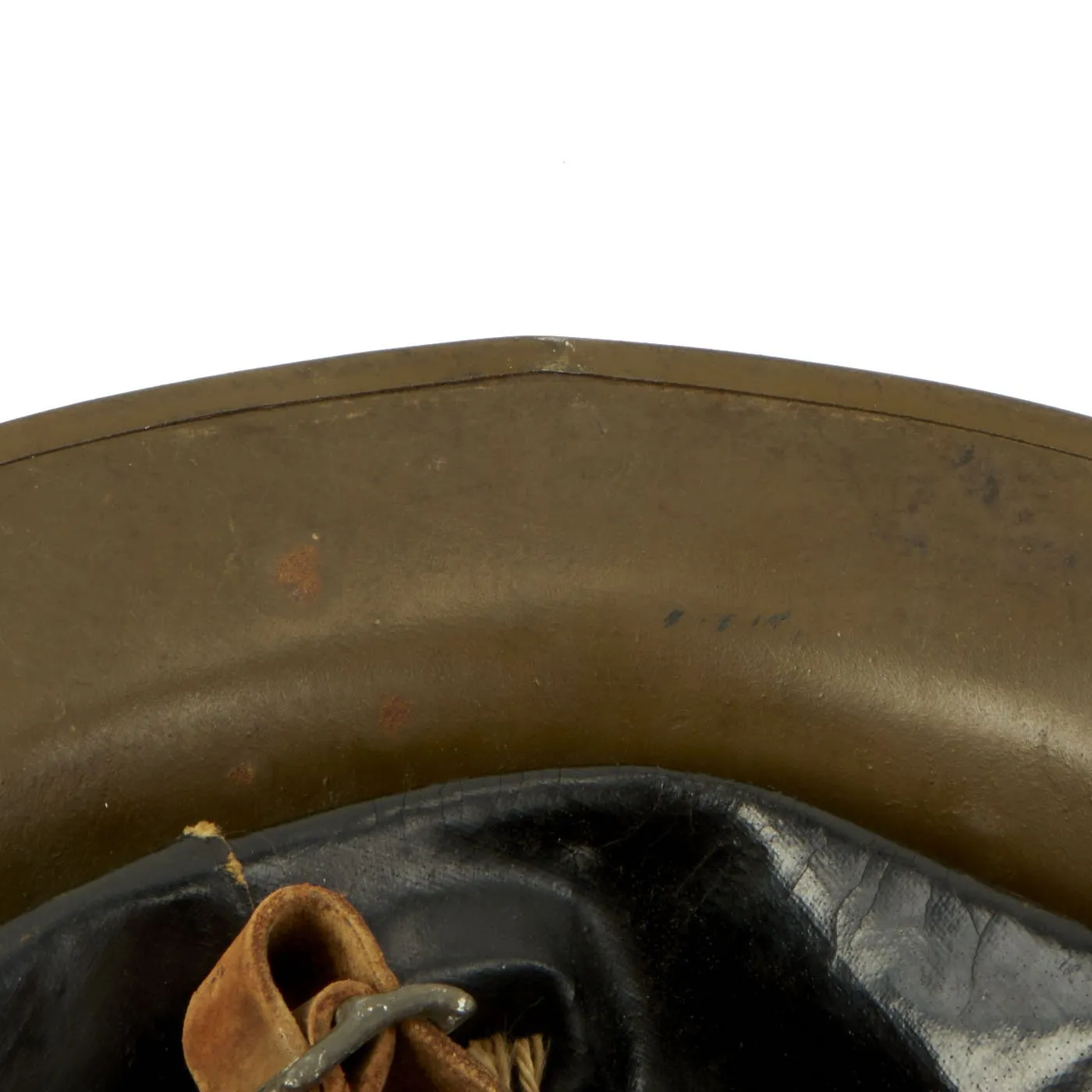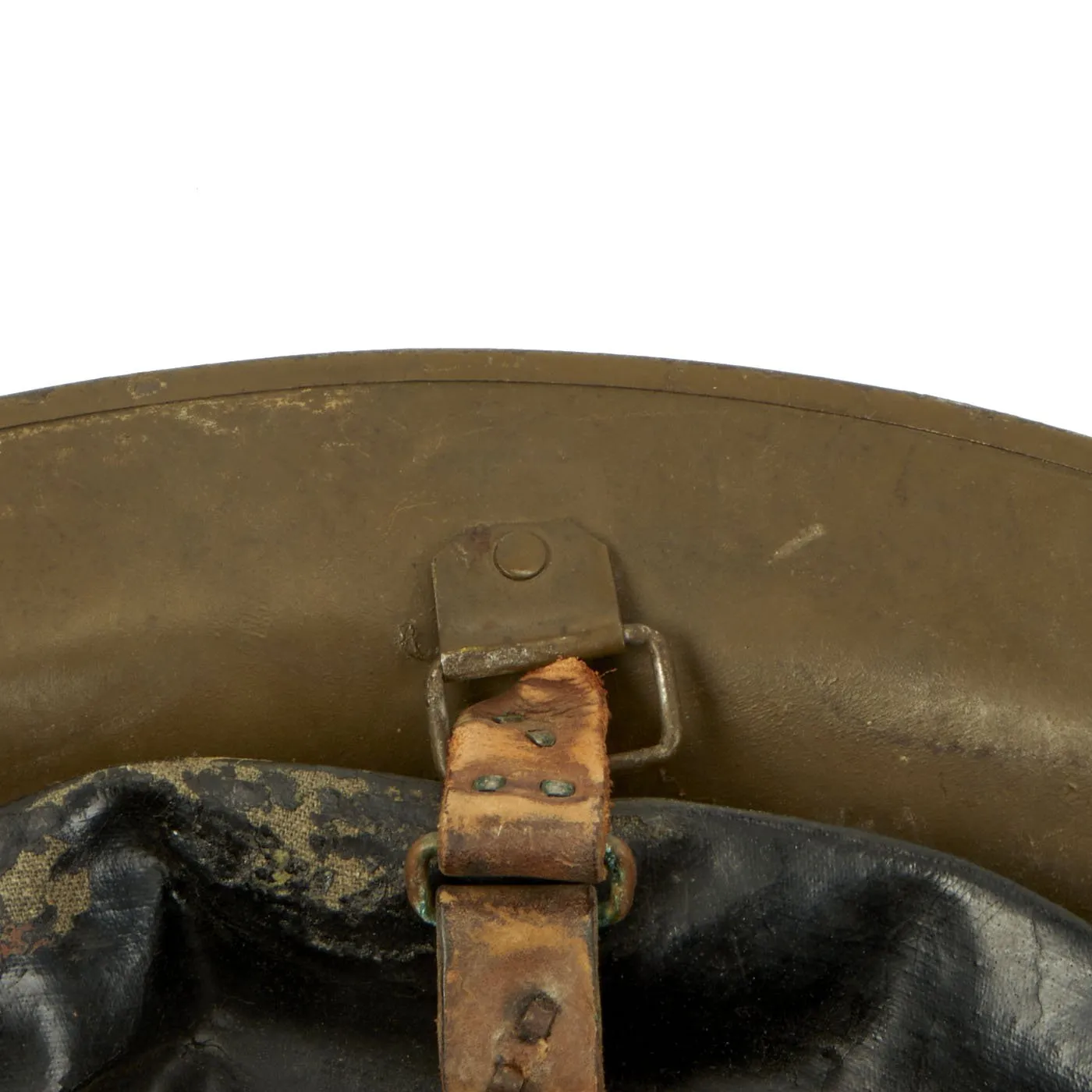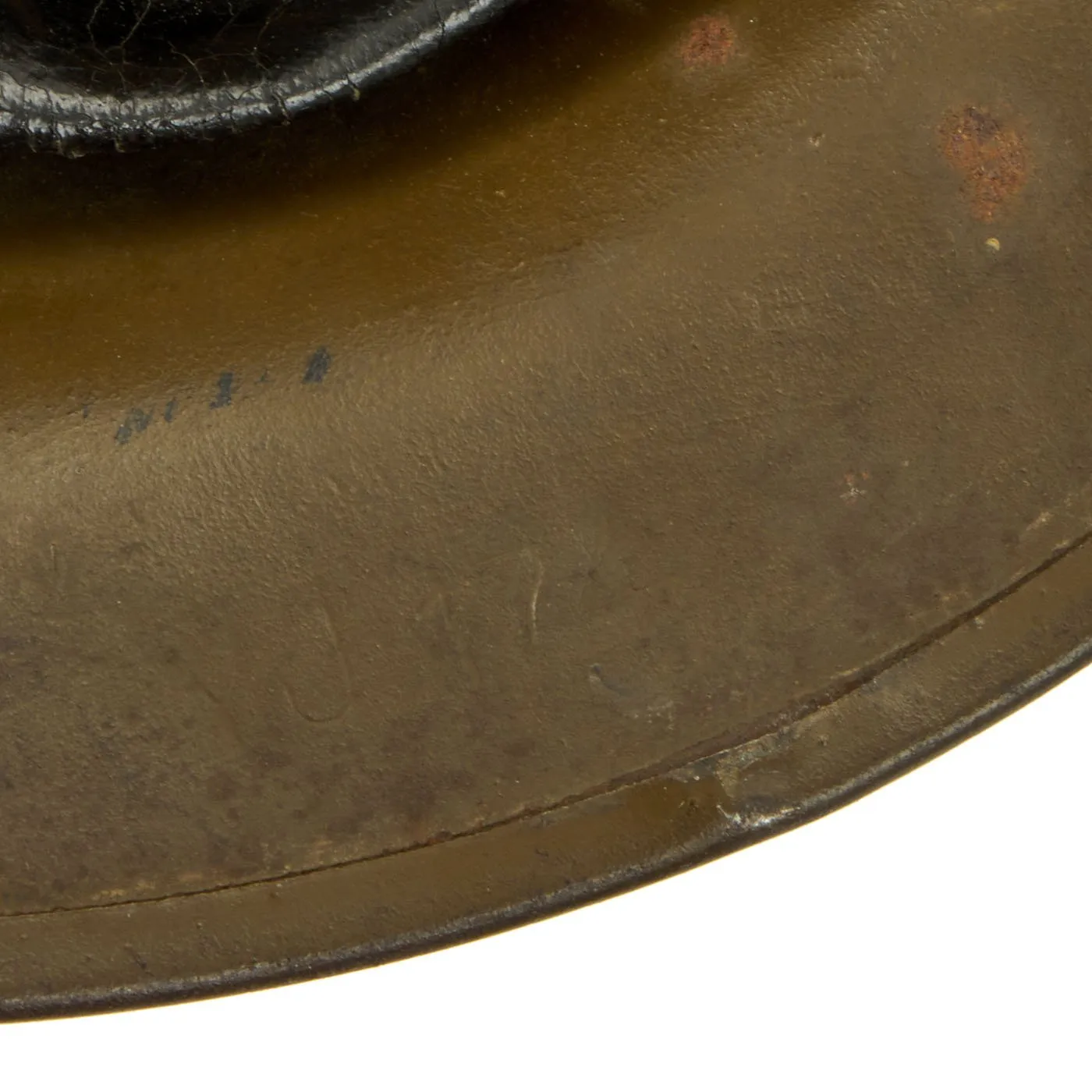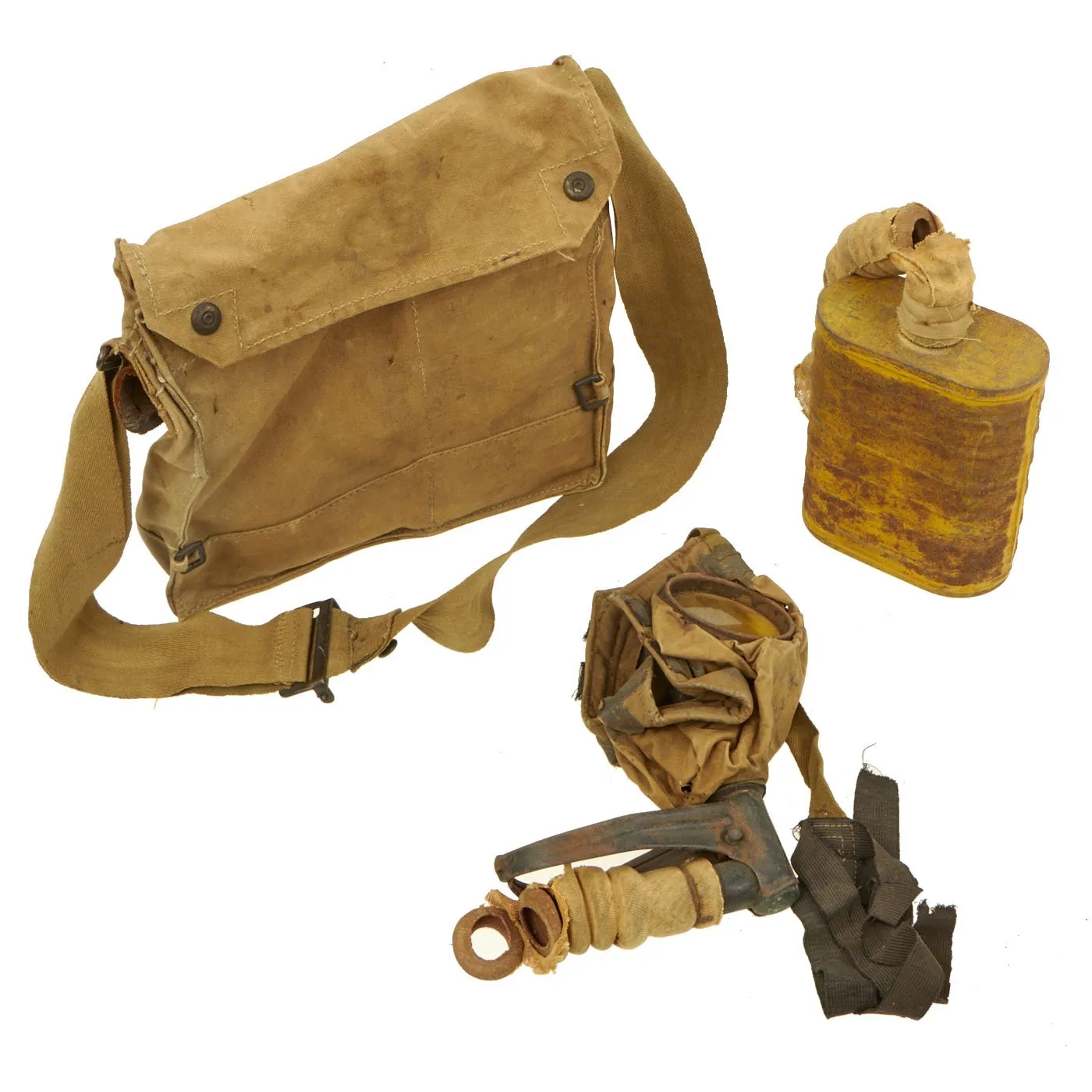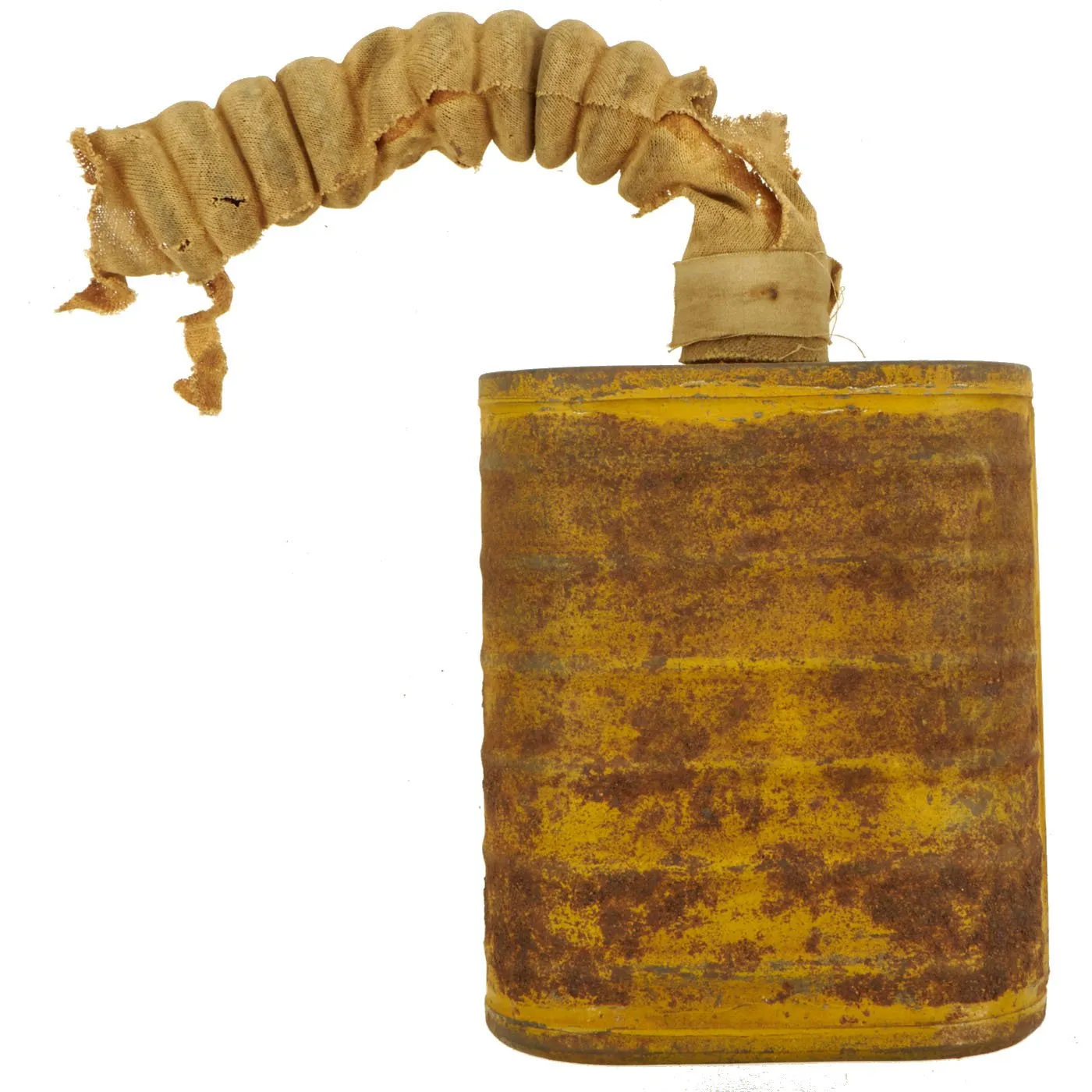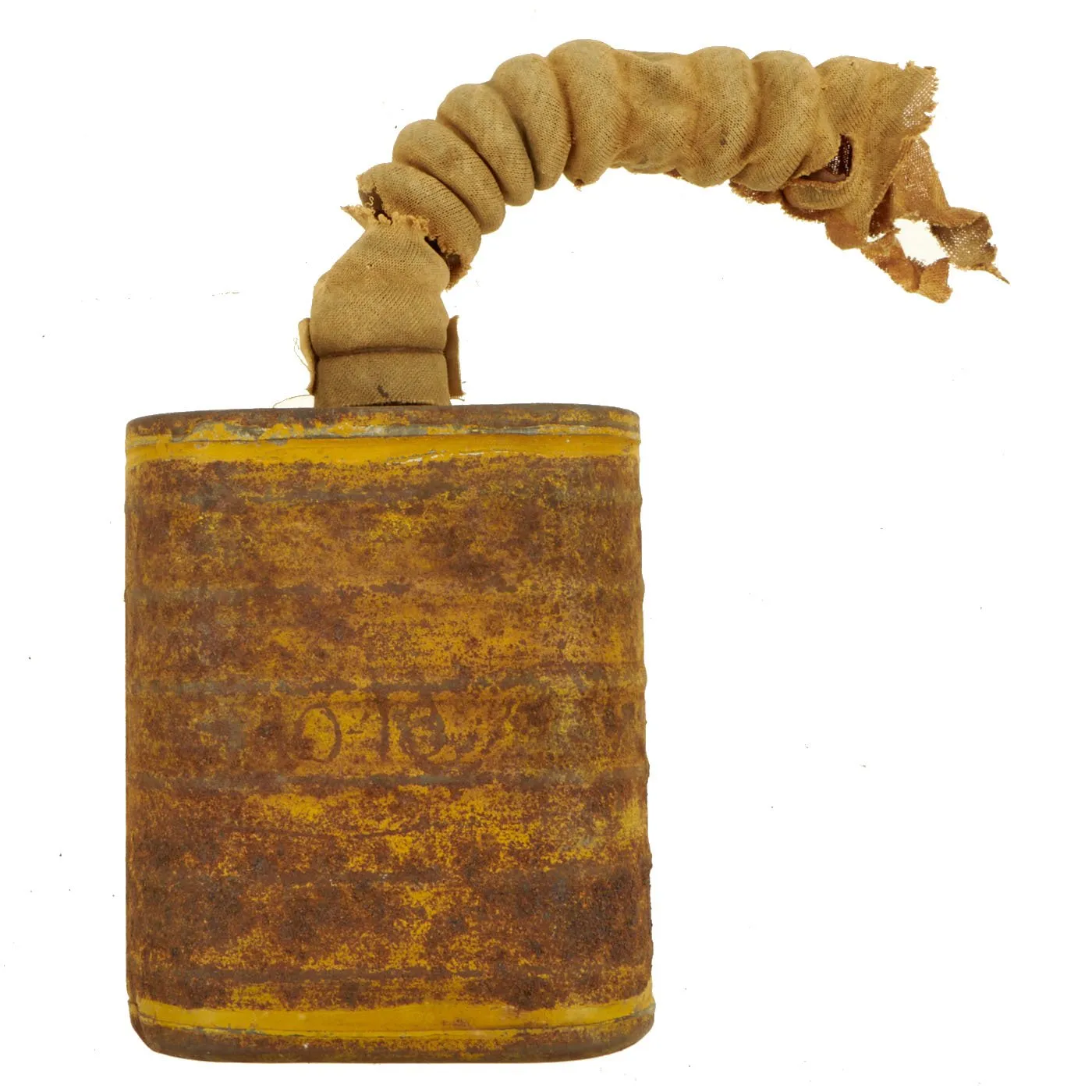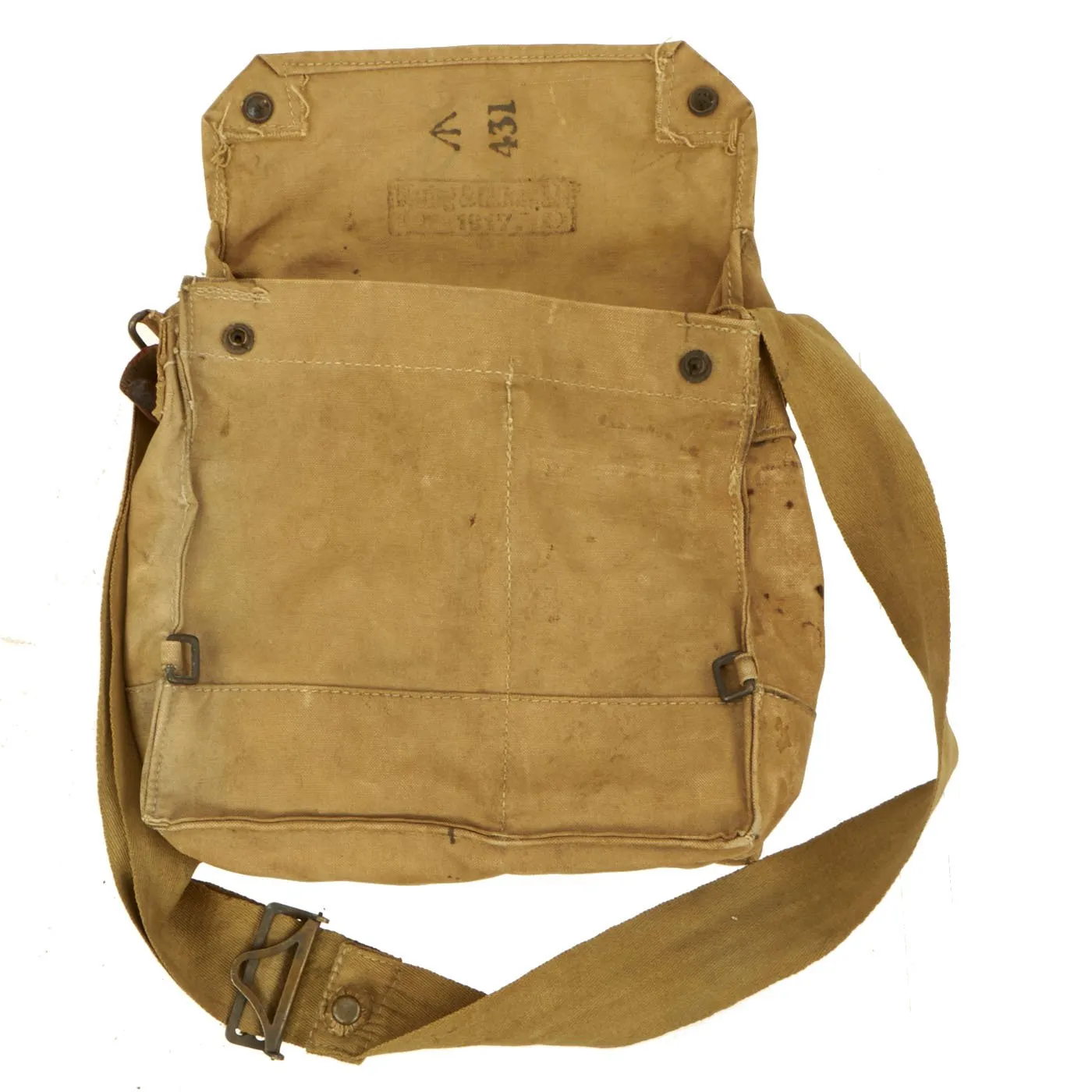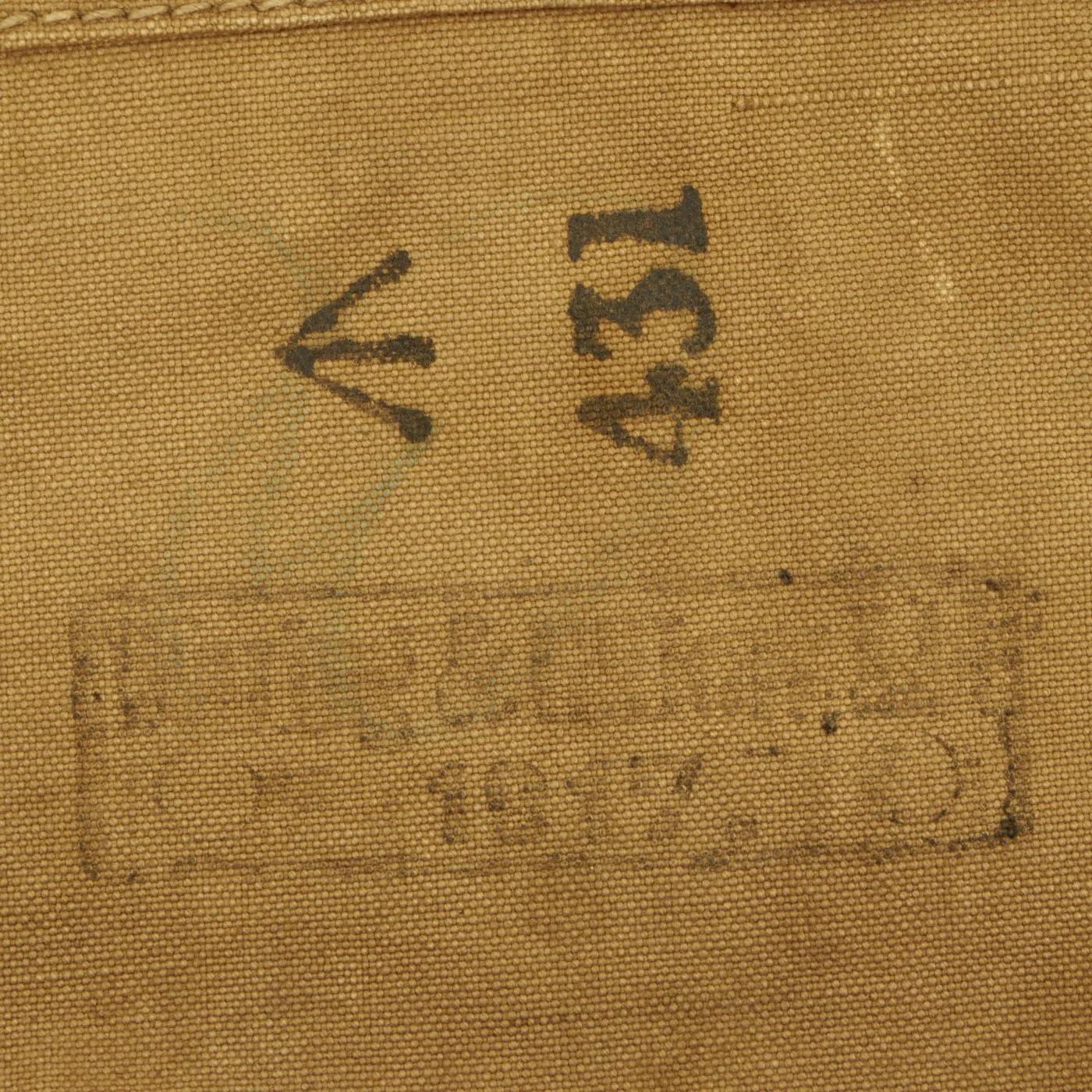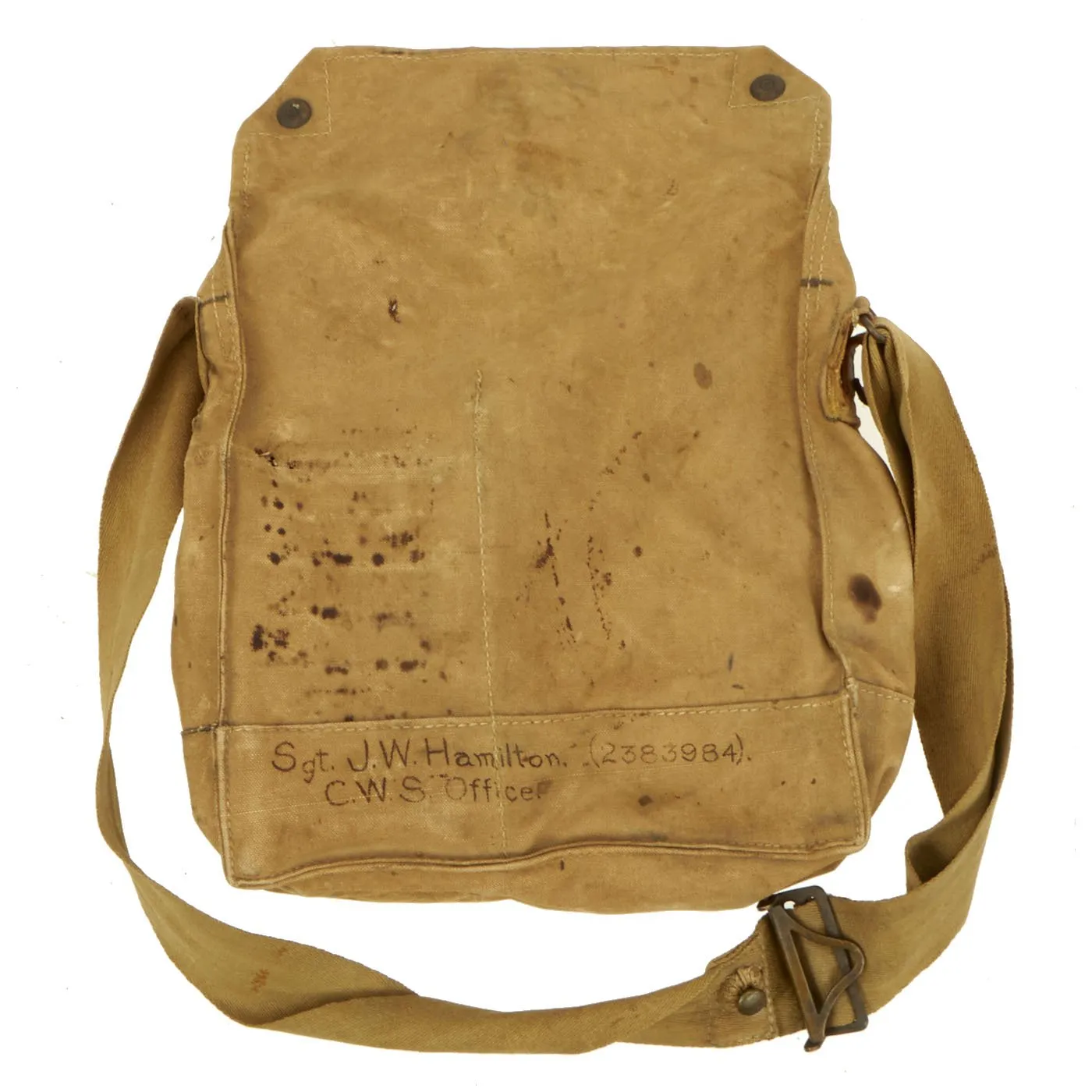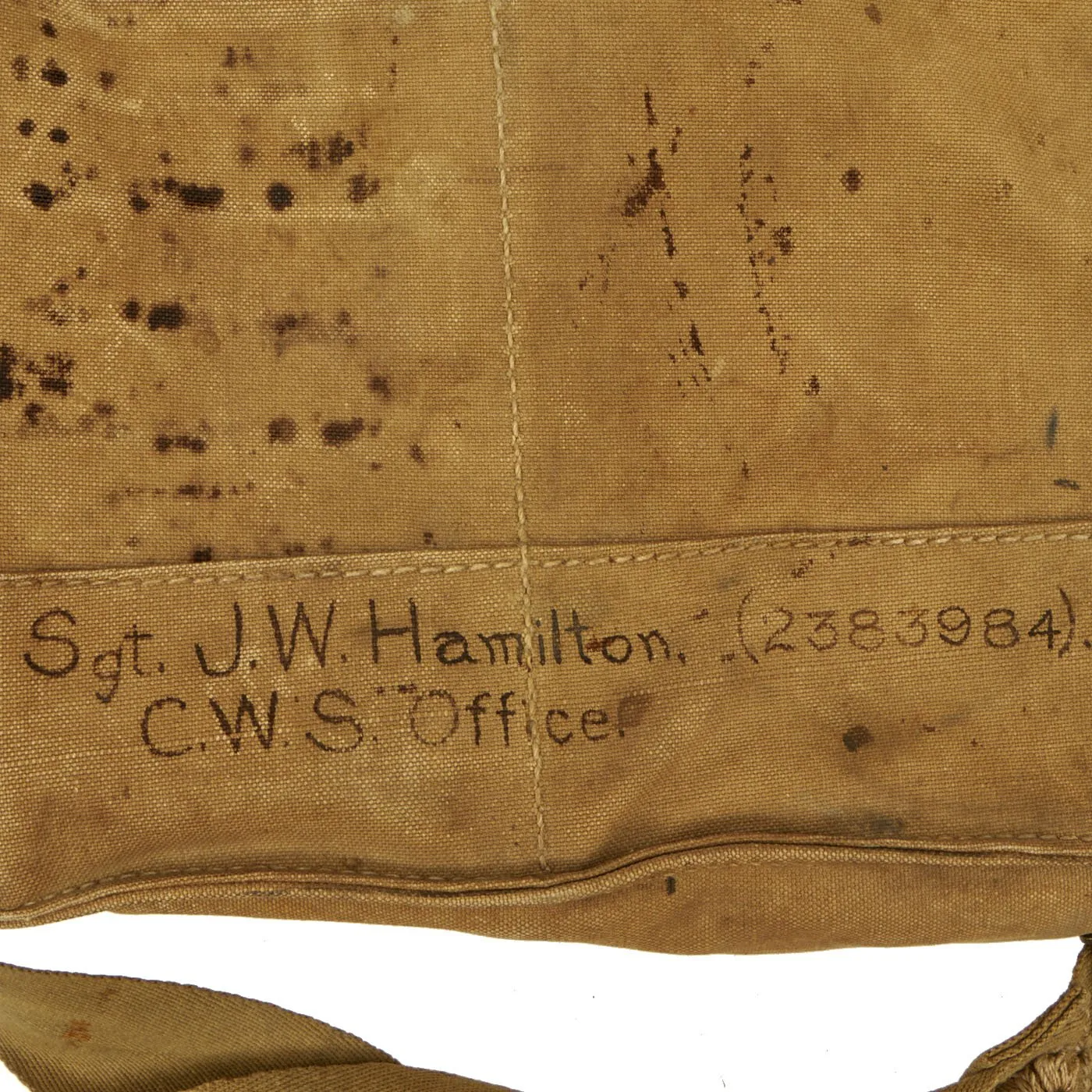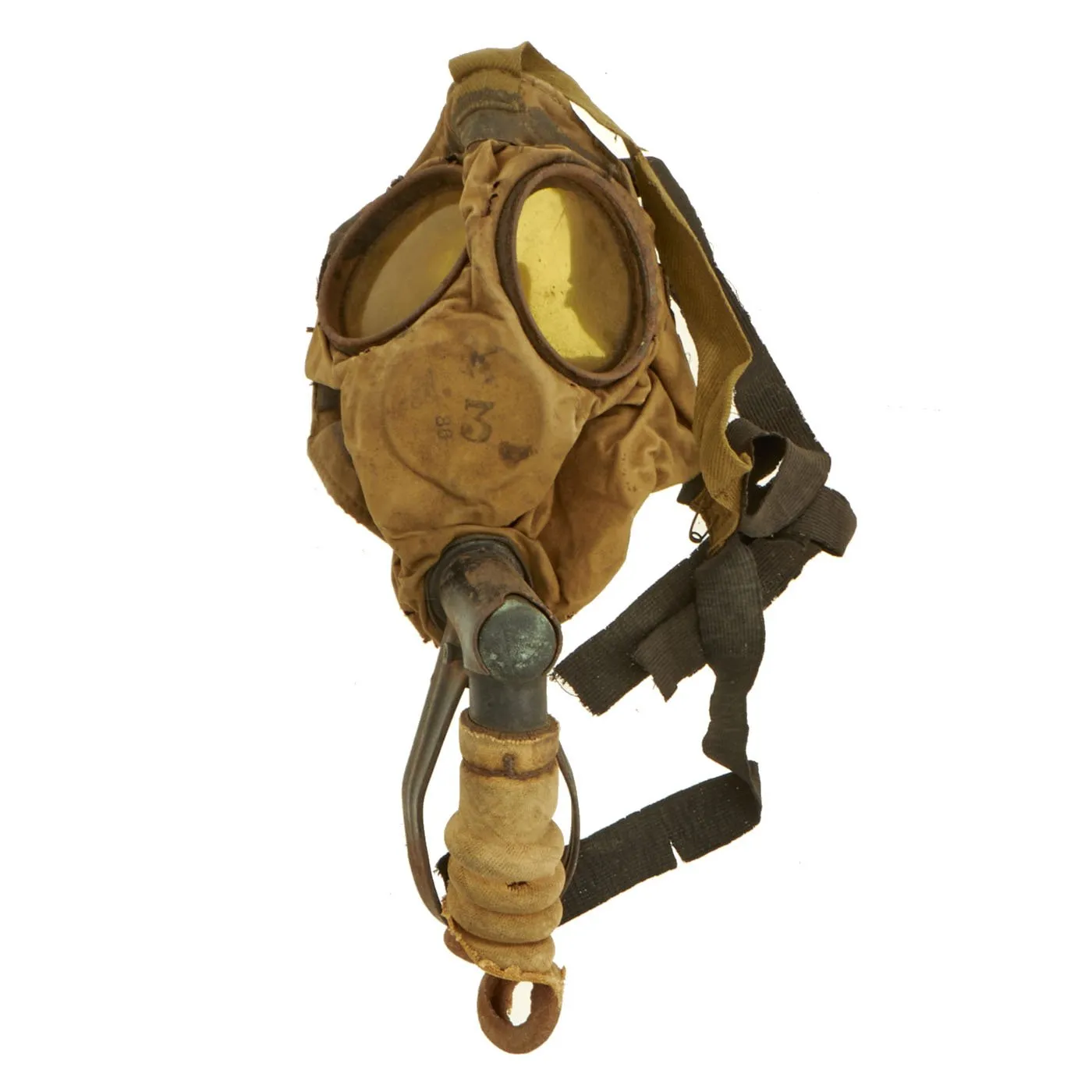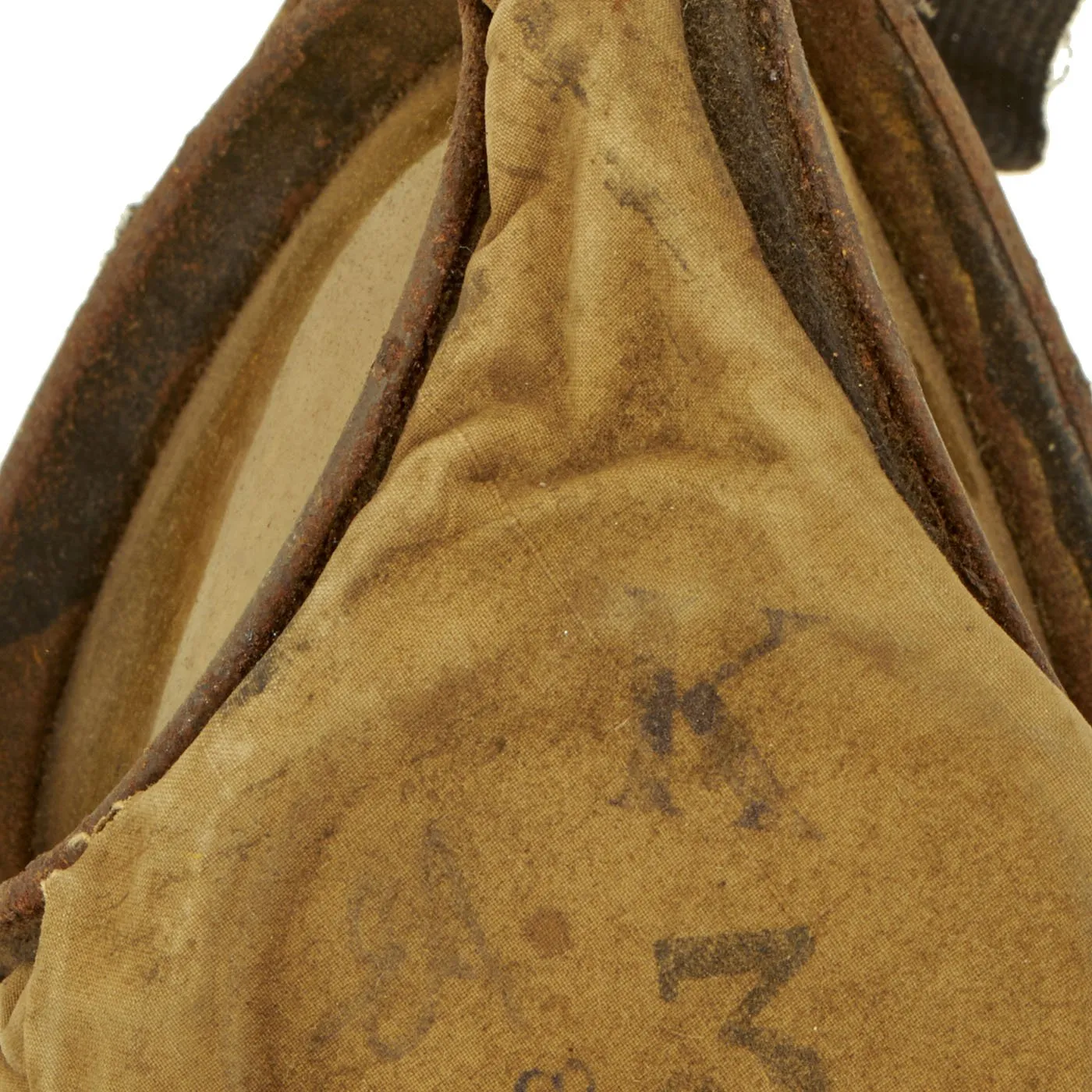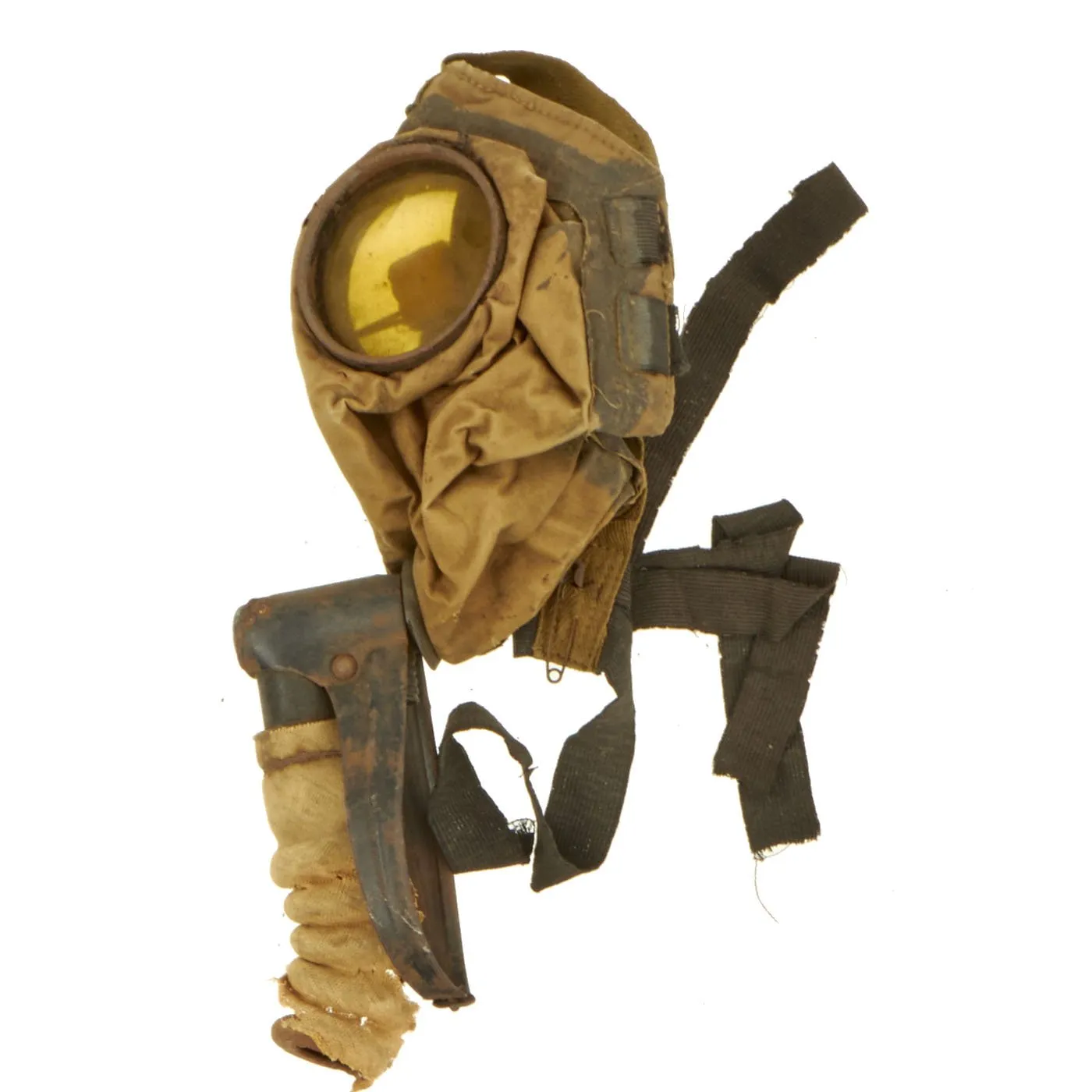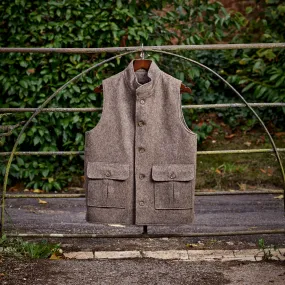Original Items: One of a Kind. WWI U.S. Army 33rd Division grouping attributed to Sergeant J.W. Hamilton. The 33rd Division arrived in France in May of 1918, and was one of the first units to enter combat with Australian Forces at the battle of Hamel. The Division was trained by both British and Australian Forces. A Unit with a great service record, the unit participated in the major campaigns of Le Hamel, Meuse-Argonne Offensive, Somme offensive, and Saint-Mihiel, enduring 6,864 casualties. Five Medals of Honor were awarded by members of the Division.
No research has been conducted on Sergeant Hamilton, and the grouping is offered as it was found recently, as some would say “out of the woodwork”. Of note in this grouping is the British Pattern 1917 Gas Mask and Bag, a piece which is very scarce today in any condition. An exceptional U.S. Model 1917 Helmet with rough textured finish with a 33rd Division insignia scrapped into the paint is also included with the lot. As the 33rd was trained, and attached, to British units during WWI it was not uncommon for them to be issued with British masks, which were in short supply when they arrived in France.
Included in this wonderful Great War Grouping are the following pieces:
- British Model 1917 Small Box Respirator Gas Mask with Bag (Maker marked and dated 1917, with Broadarrow and “431” inspector stamp). Original Carry bag is complete with shoulder strap. Mask itself is marked size “3”, and is in poor condition, with the mask body being stiff and the respirator hose brittle and broken (which is not uncommon for these masks that are over 100 years old!). Written on the front of the mask is “Sgt.J.W. Hamilton (2383984)/C.W.S. Officer”. We assume “C.W.S. Officer” indicates that he was a Chemical Warfare Service Officer attached to the headquarters of the 33rd Division.
- Army Model 1912 Coat with wool on wool 33rd Infantry Division insignia on left shoulder, Sergeant chevron, one overseas chevron denoting six months overseas, U.S. and Infantry Headquarters Collar disc. Tunic is approximately a size 36 US. Maker tag found within the skirt lining indicates this Jacket is a June 21, 1917 Contract garment made by the Bernheim firm, and was processed through the Philadelphia Quartermaster Depot. Jacket has a Victory medal ribbon affixed above the left pocket.
- Victory Medal with “FRANCE” clasp. Medal was found inside the coat pocket.
- Fantastic M1917 Helmet with wonderful rough texture finish. Hamilton scratched a 33rd Division SSI on the front of the helmet. Liner is intact, and the original chinstrap is unbroken. Note the remnants of chalky French mud still evident on the outside of the helmet, remaining decades after the helmet was worn!
Approximate Jacket Measurements:
Collar to Shoulder: 10”
Shoulder to Sleeve: 24”
Shoulder to Shoulder: 16.5”
Chest Width: 15.5”
Waist Width: 16”
Hip Width: 16.5”
Front Length: 30”
History of the 33rd Division During WWI:
The 33rd Division served in World War I and beyond. The division was trained at Camp Logan in Houston, Texas as part of the National state guard in Illinois. The first unit went to France in 1918. The first unit to go into France was the 108th Engineers, under Colonel Henry A. Allen.
During World War I, the 33rd Division's officers included Second Lieutenant John Allan Wyeth, who has been called the only American poet of the Great War who can stand up to comparison with British war poets Siegfried Sassoon and Wilfred Owen. Wyeth later immortalized his war experiences with the 33rd U.S. Division in the 1928 sonnet sequence This Man's Army: A War in Fifty-Odd Sonnets.
On 20 and 21 June the division went to the Amiens sector, where there was expected to be a major German attack. The division was trained by British Army and Commonwealth soldiers – in particular the Australian Corps – and was part of some of their operations.
The first major battle in which elements of the 33rd Division took part was the Battle of Hamel on 4 July. Individual platoons from four companies from the 131st Infantry and 132nd Infantry were distributed among Australian battalions, to gain combat experience. This, however, occurred without official approval as there was controversy regarding the battlefield command of US troops by junior officers from other countries. Thus, while Hamel was a relatively minor battle by the standards of World War I, it was historically significant as the first occasion on which US Army personnel had fought alongside British Empire forces, and demonstrated that the previously inexperienced American troops could play an effective role in the war. The battle was also historically significant for the use of innovative assault tactics, devised by the Australian General John Monash, were demonstrated.
The 33rd Division was in reserve behind the British Fourth Army at the opening of the August offensive for emergencies only. With the British III Corps attack stalling at Chipilly Ridge during the Battle of Amiens, the 131st Regiment of the 33rd Division was sent to assist on 9 August, which it did with distinction.[8] The following day the Regiment was attached to the 4th Australian Division and remained there until 12 August. From 12 August until 20 August it was combined with the 13th Australian Brigade in what was called the Liaison Force commanded by Brigadier General E. A. Wisdom. This was designed to hold the front from the Somme to the Bray-Sur-Somme to Corbie road to relieve the 4th Australian Division from the operation.[9] After this it returned to the 33rd US Division.
On 23 August, the division was moved to the Toul sector. The 33rd Division fought in the Meuse-Argonne Campaign from 26 September 1918 to the end of the battle on 10 November 1918. The last mission in which the 33rd Division took part was on 27 December 1918.
In total, from the 33rd arriving in France to the German armistice on 11 November 1918, the division captured 13 units of heavy artillery and 87 pieces of light artillery. Also, they captured 460 machine guns and 430 light guns. In total, the entire division gained 40,300 meters of land in World War I. The 33rd Division was the only unit in the war to have machine gun barrage enemy nests while infantry turned the position. In total, the 33rd Division received 215 American decorations, 56 British decorations, and various others.
As a result of its World War I service, the division remains the only US Army division that has fought as part of the British Army and French Army corps.




